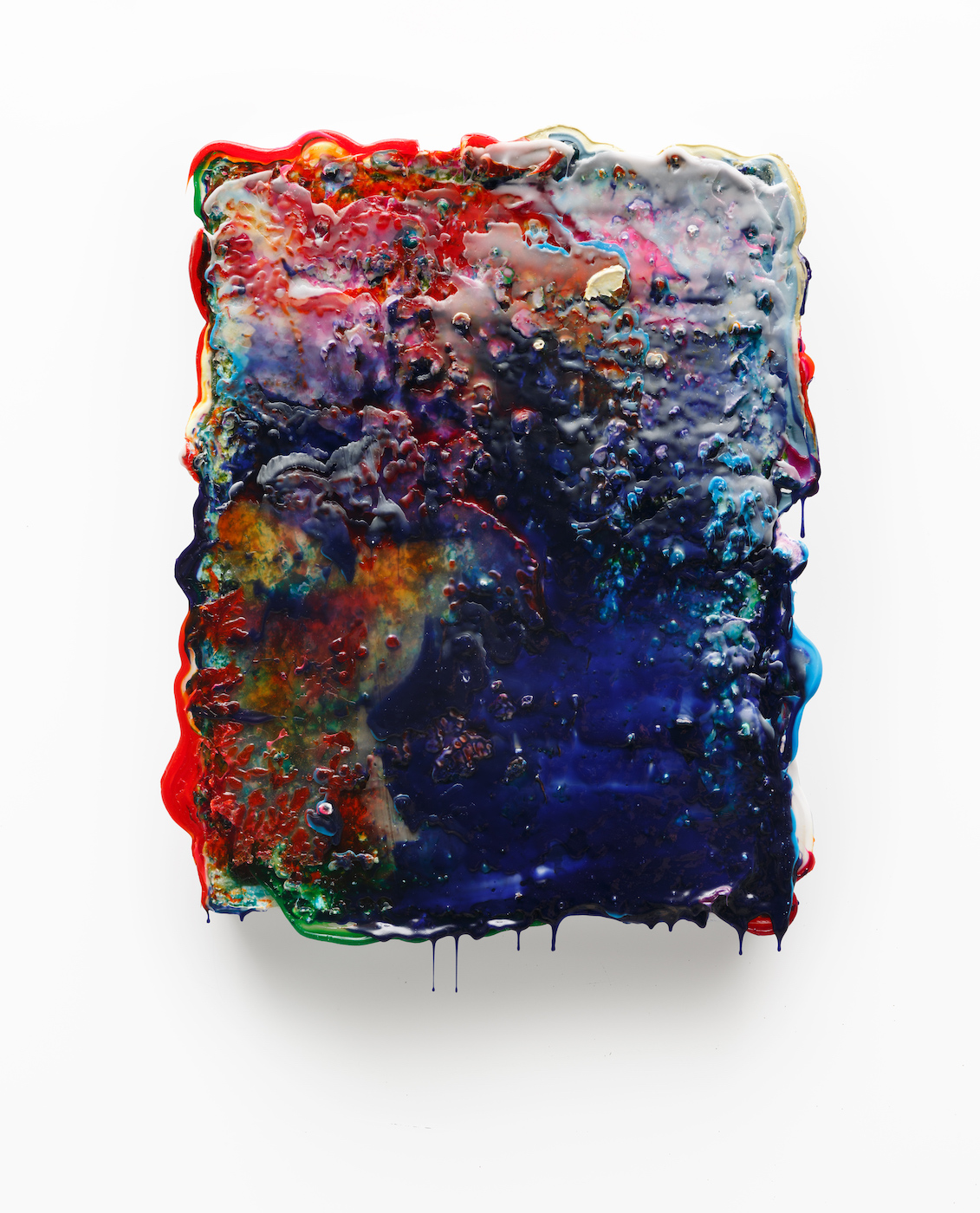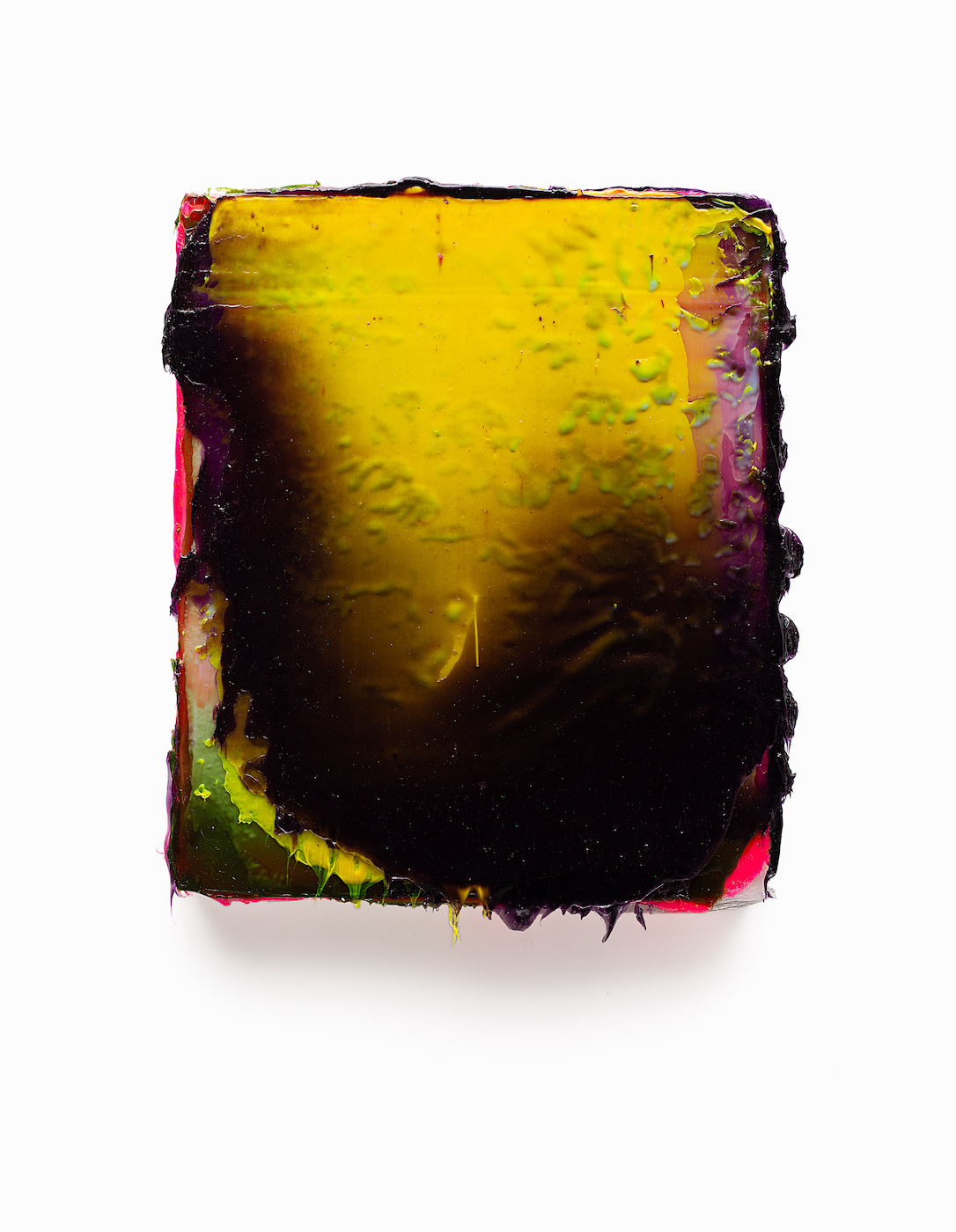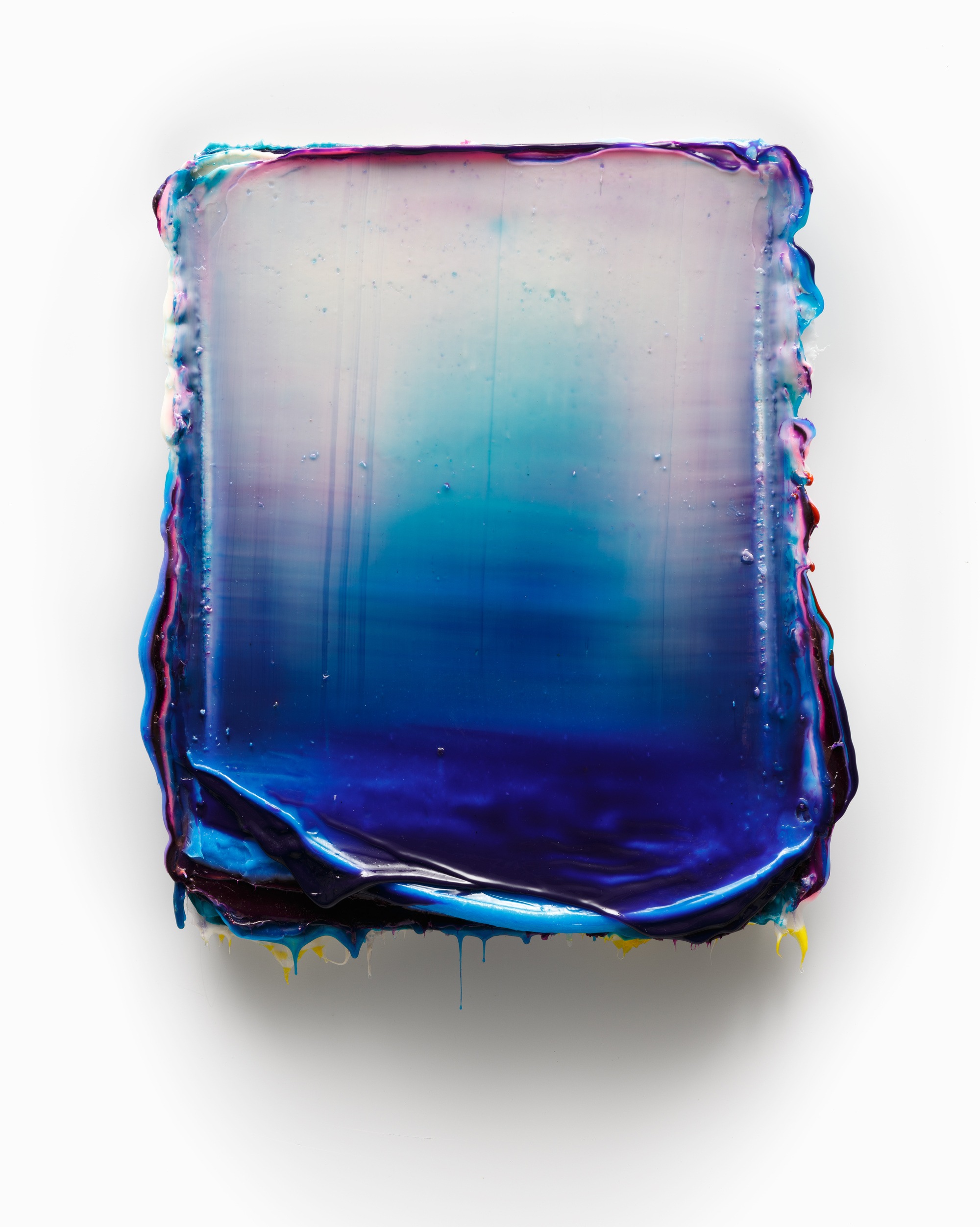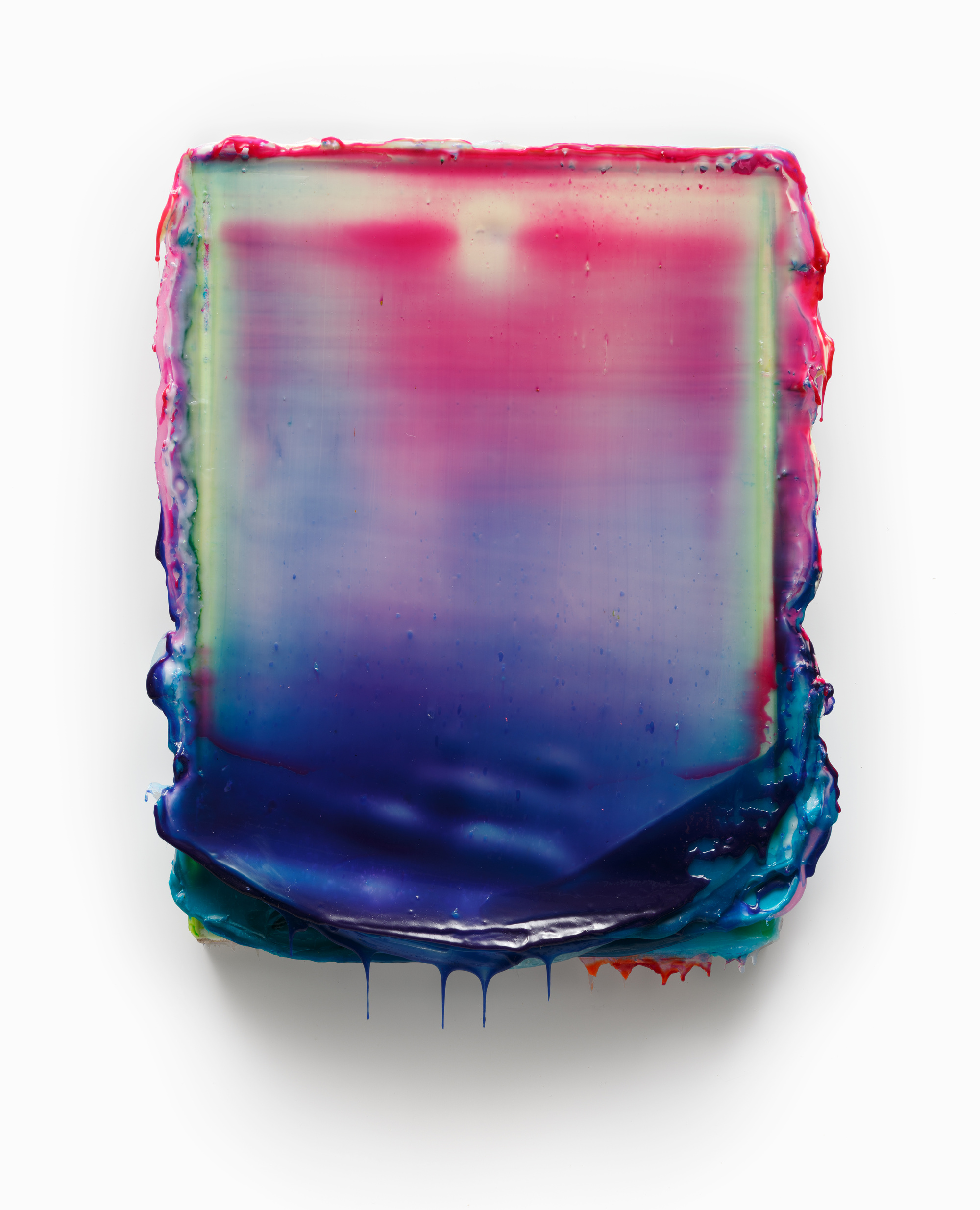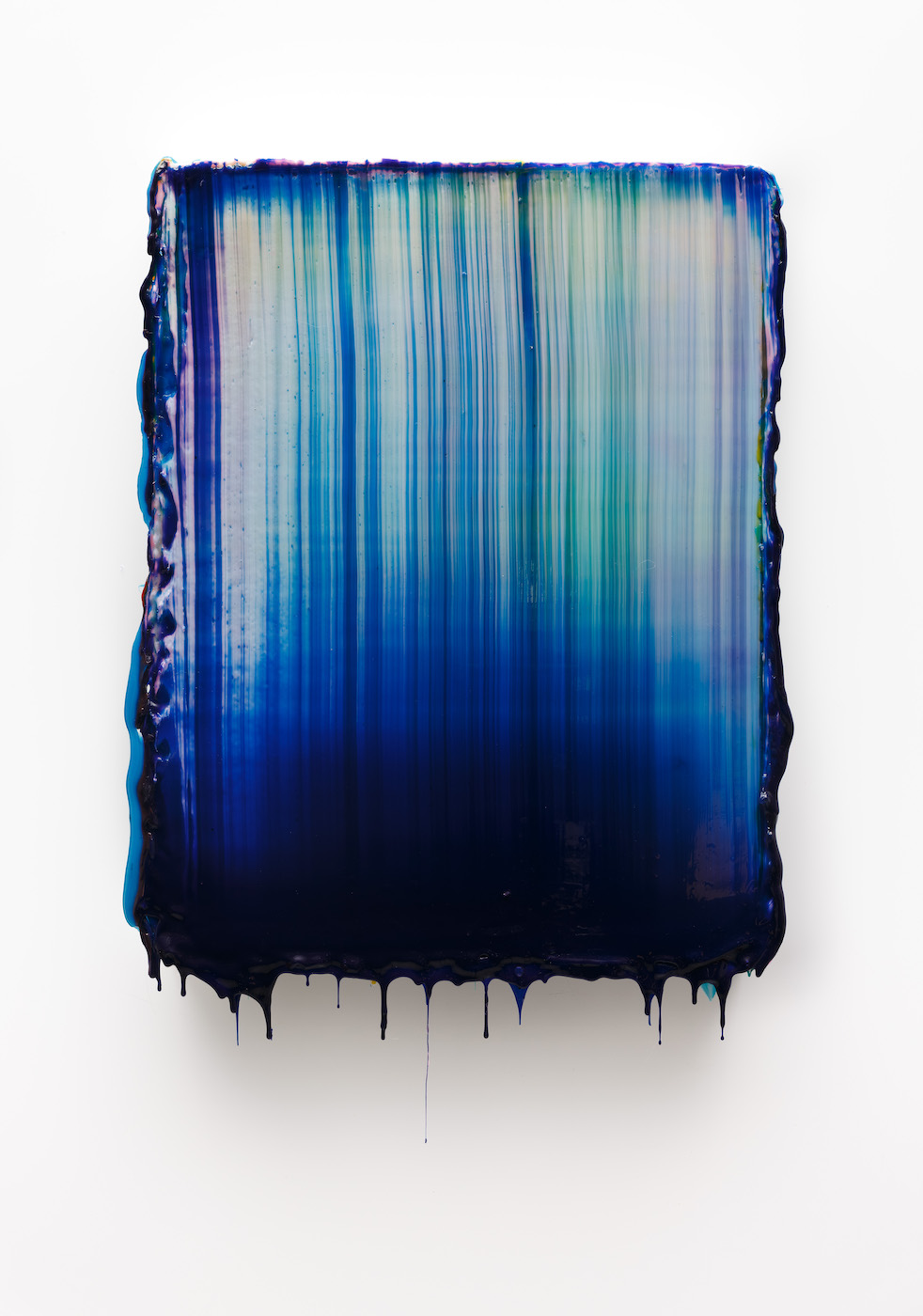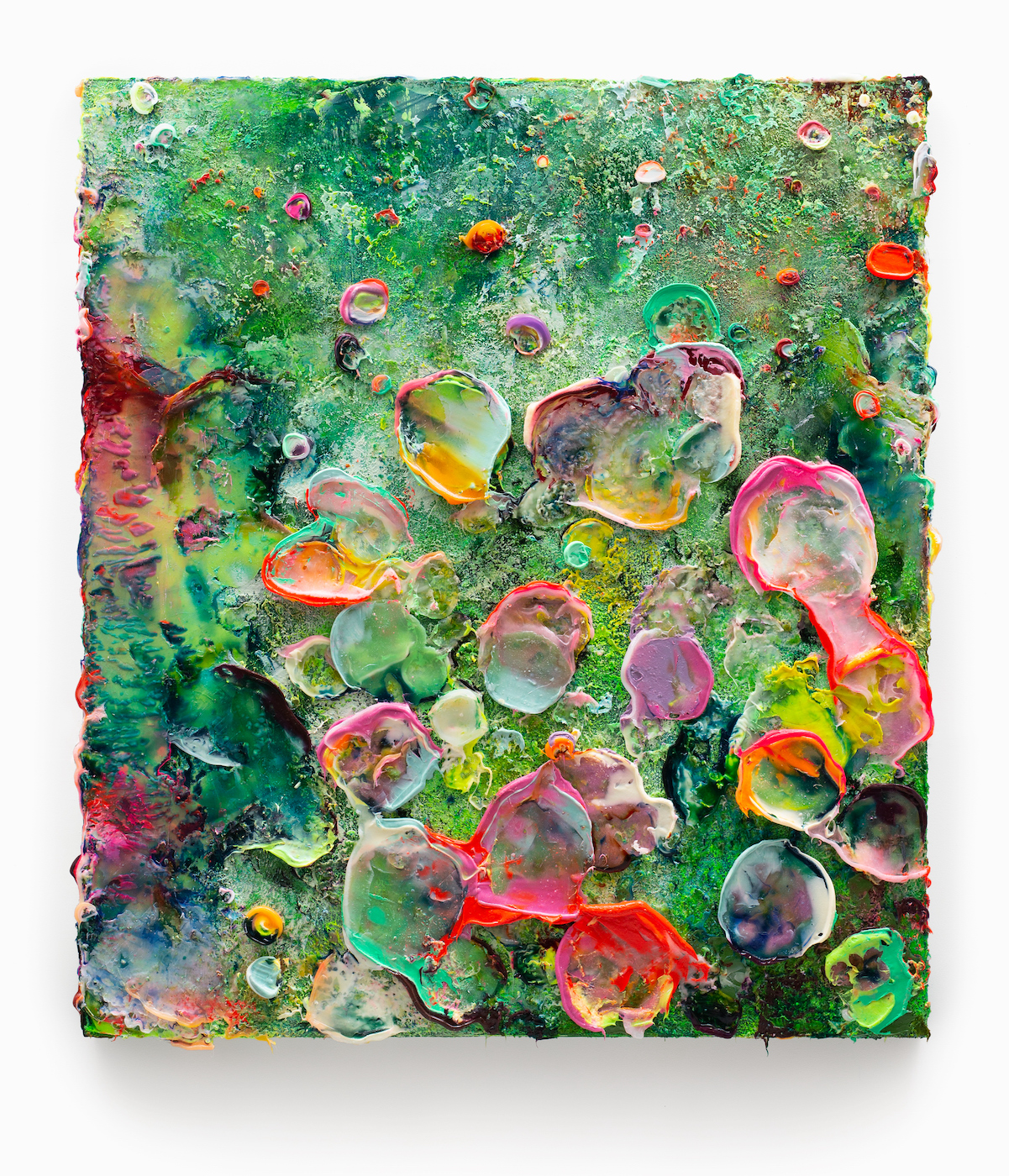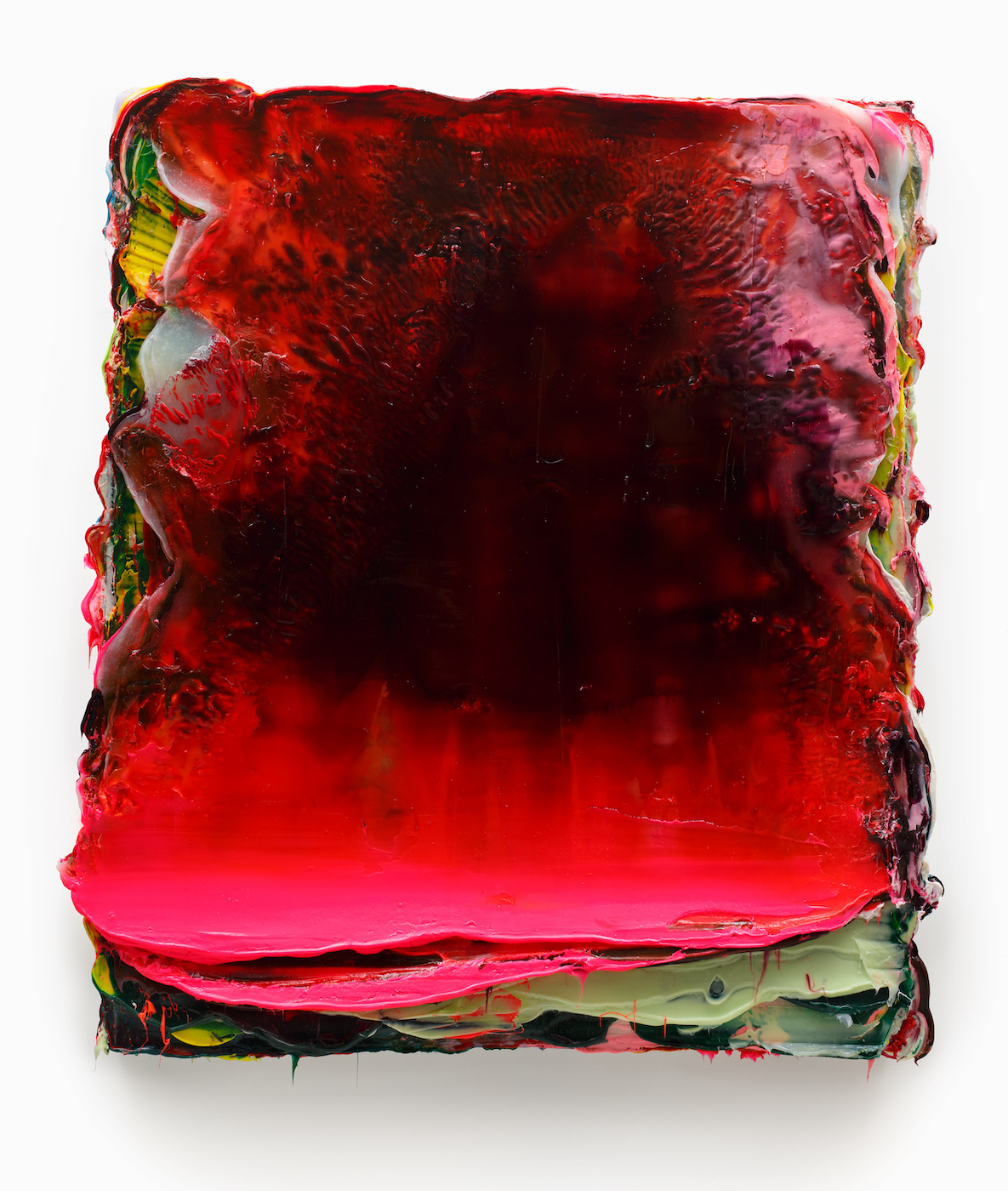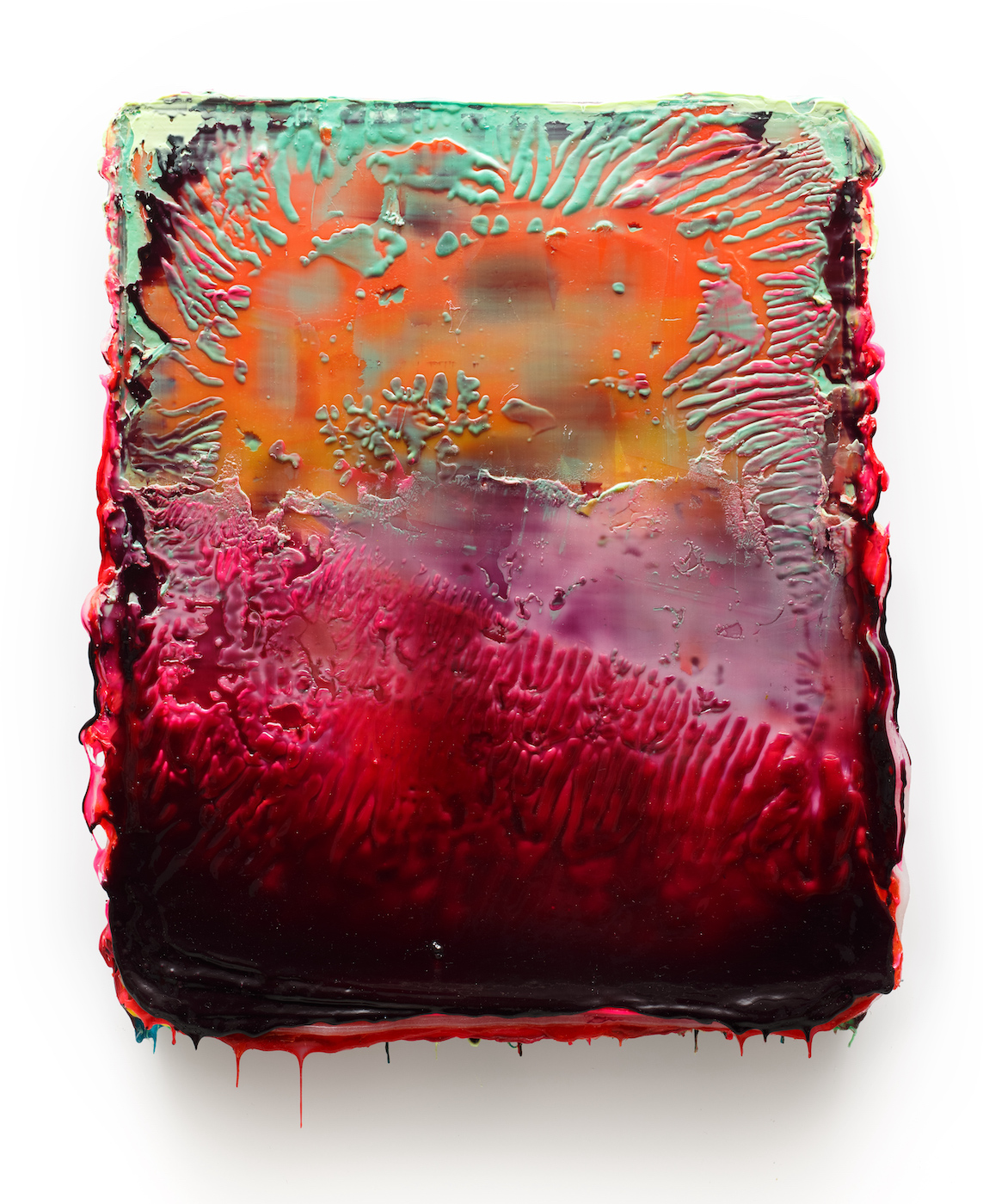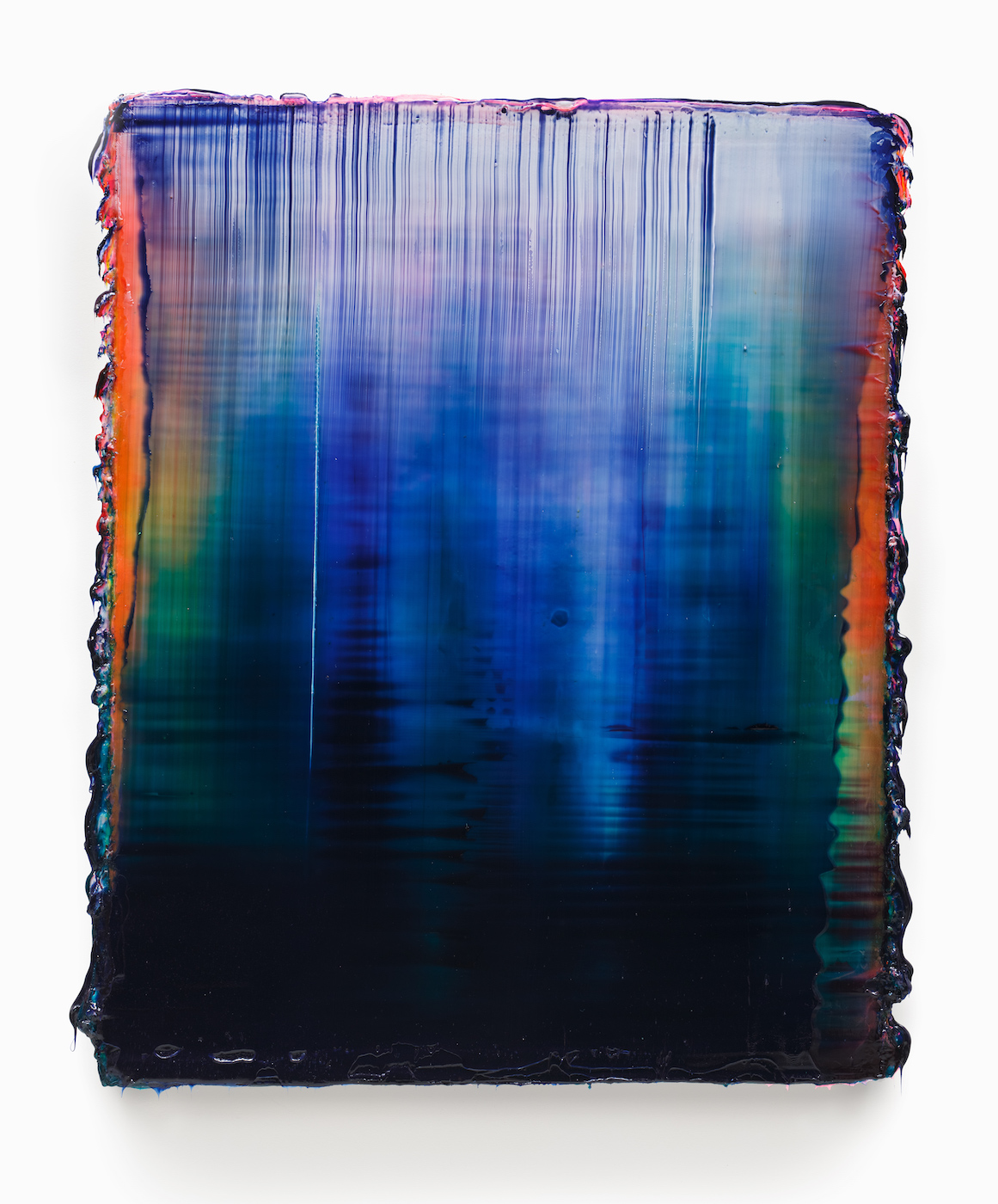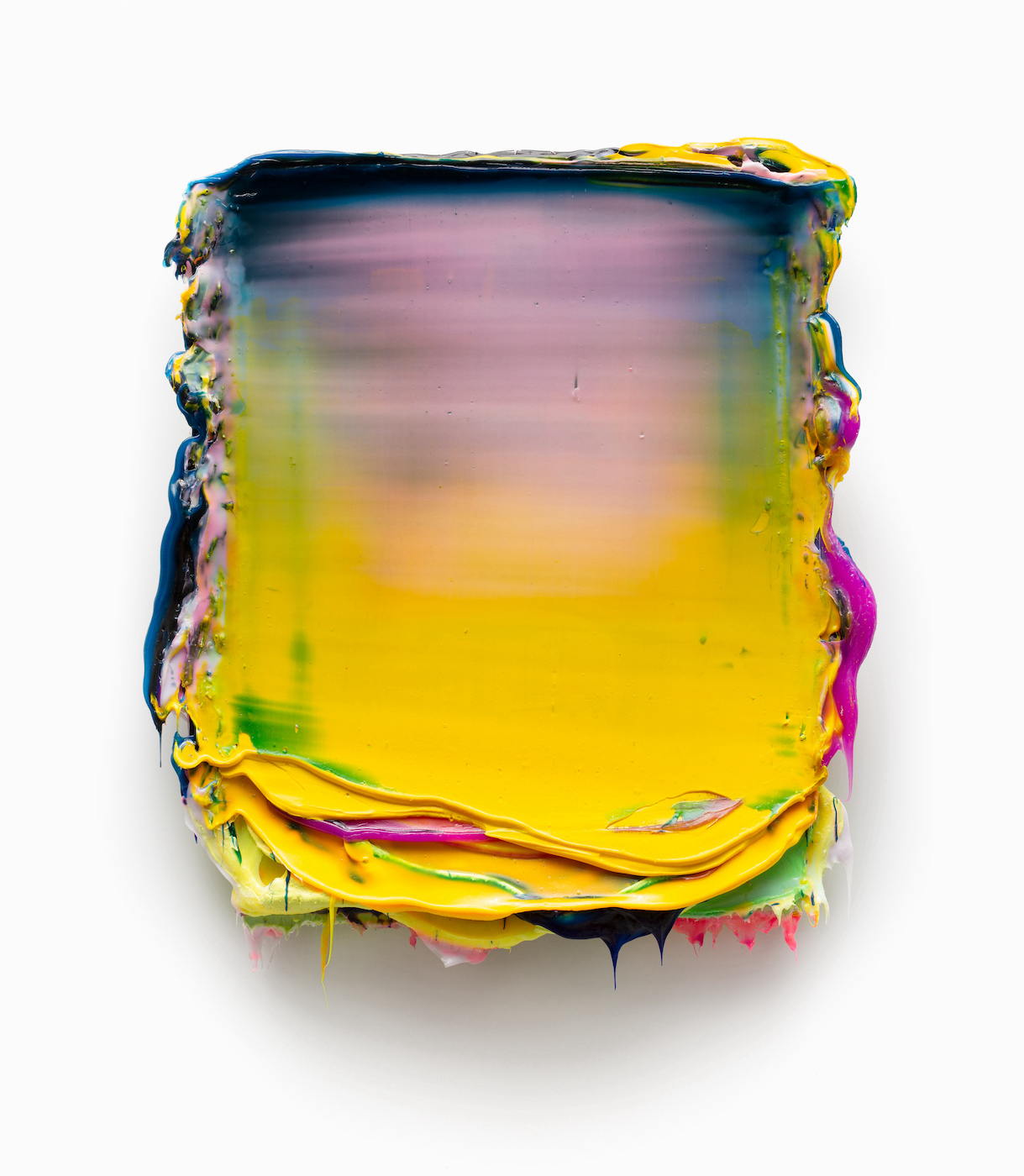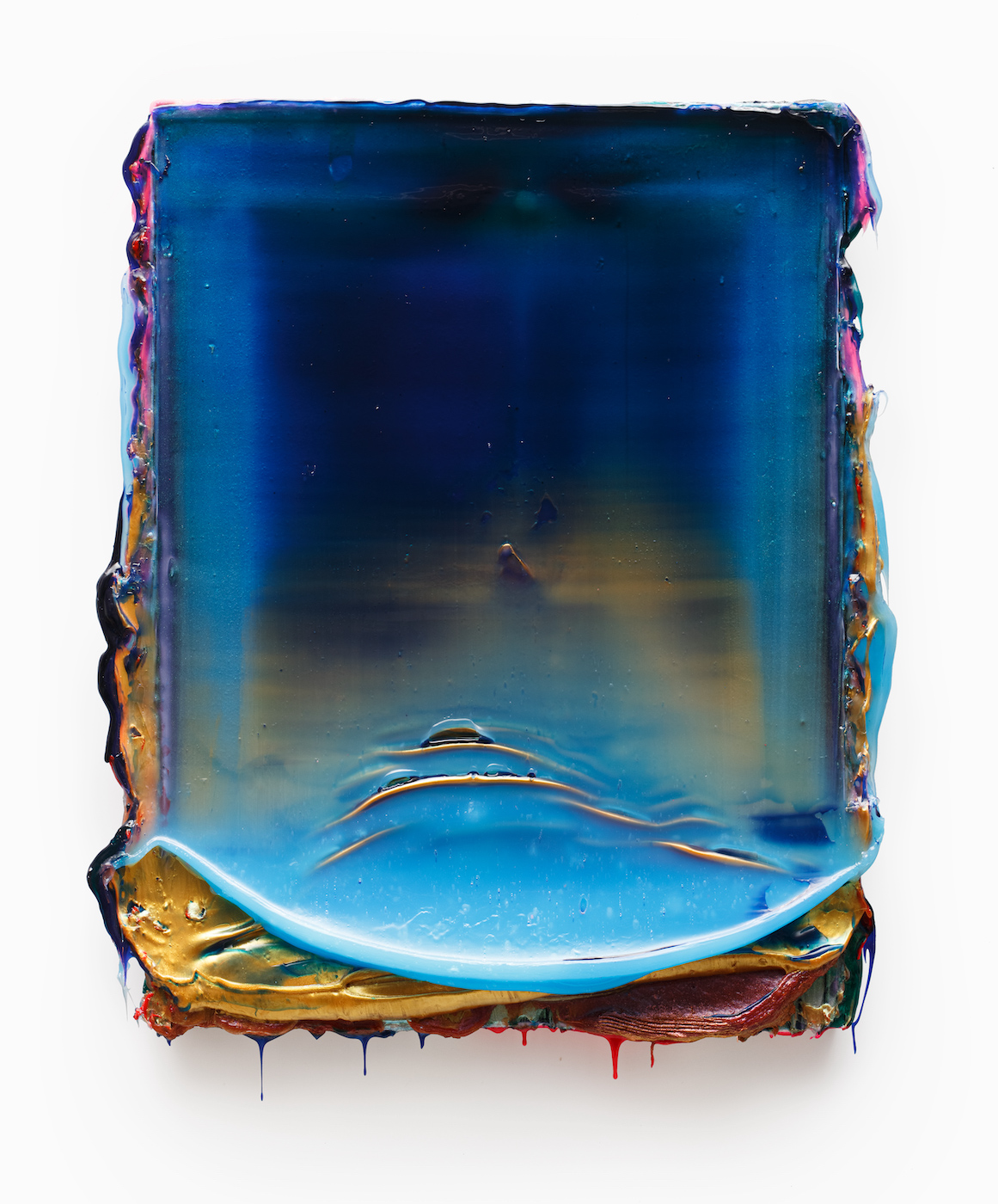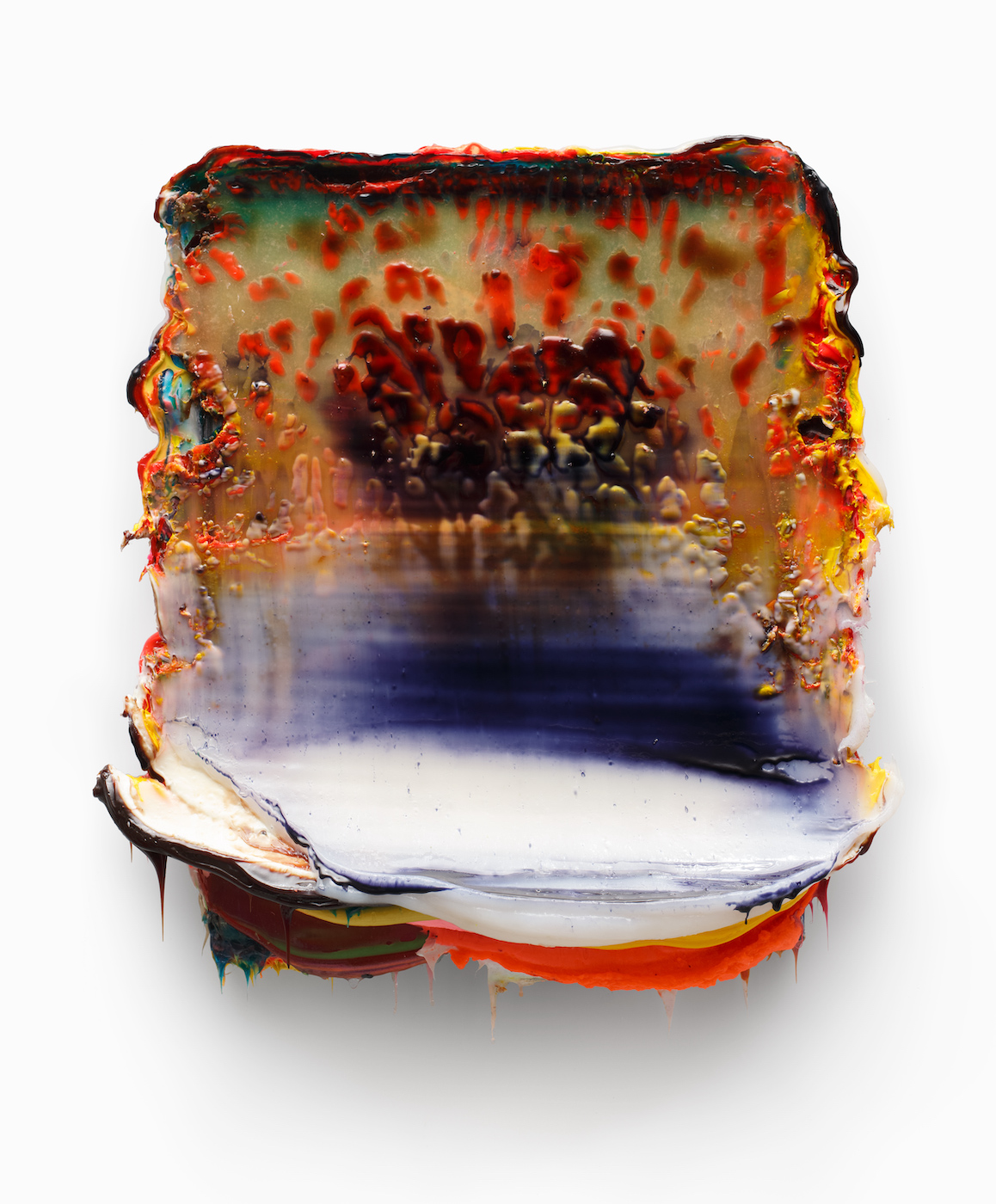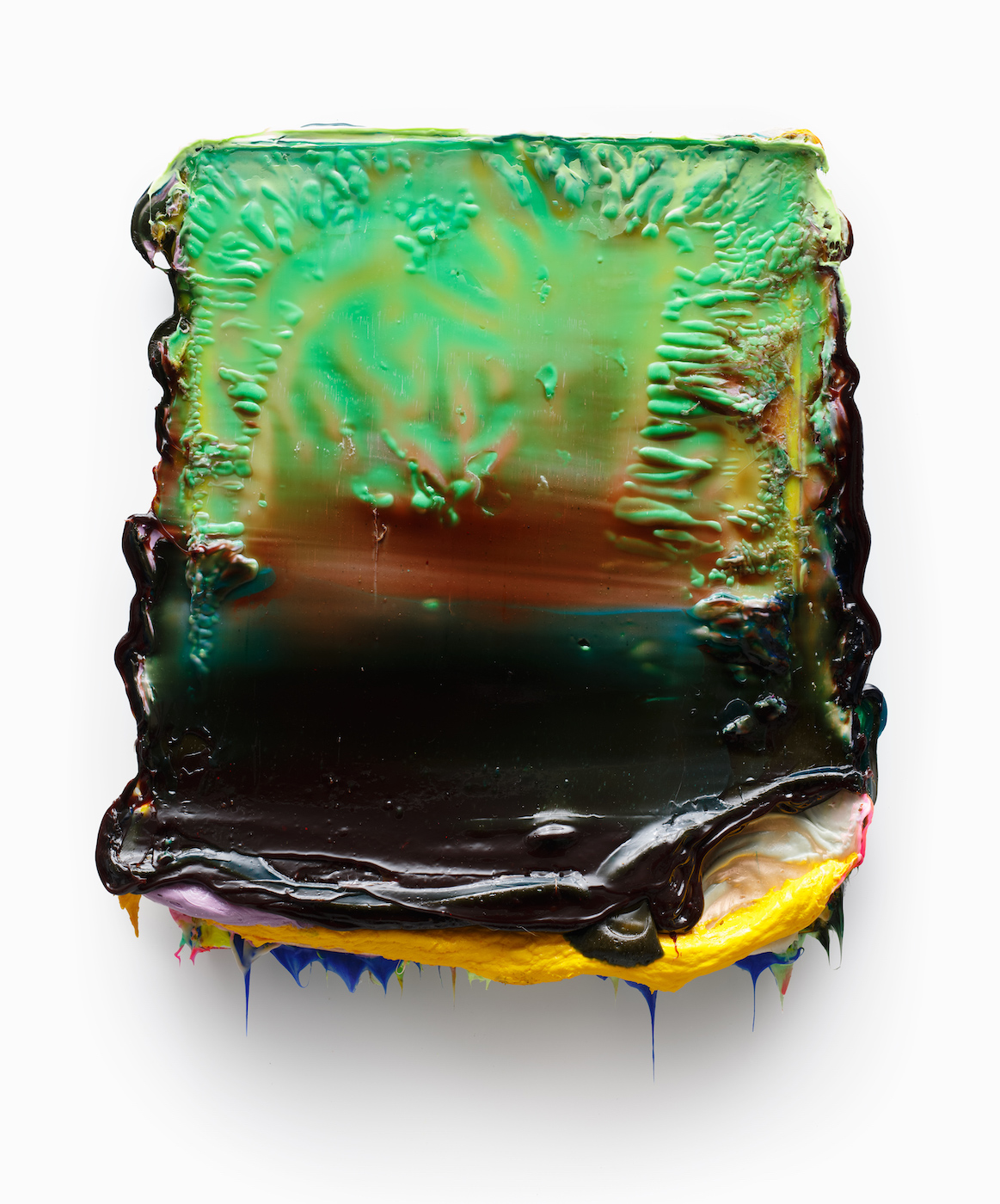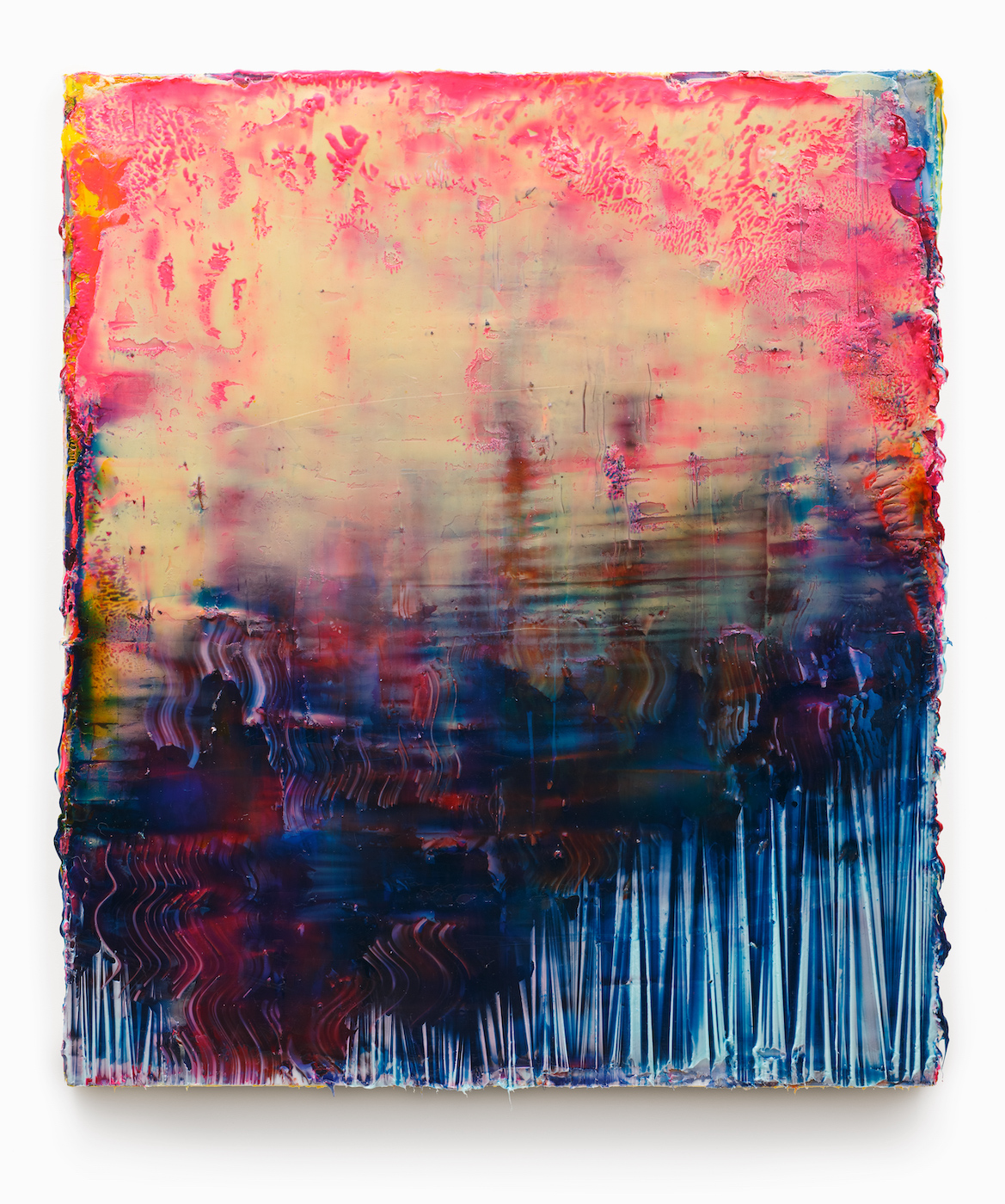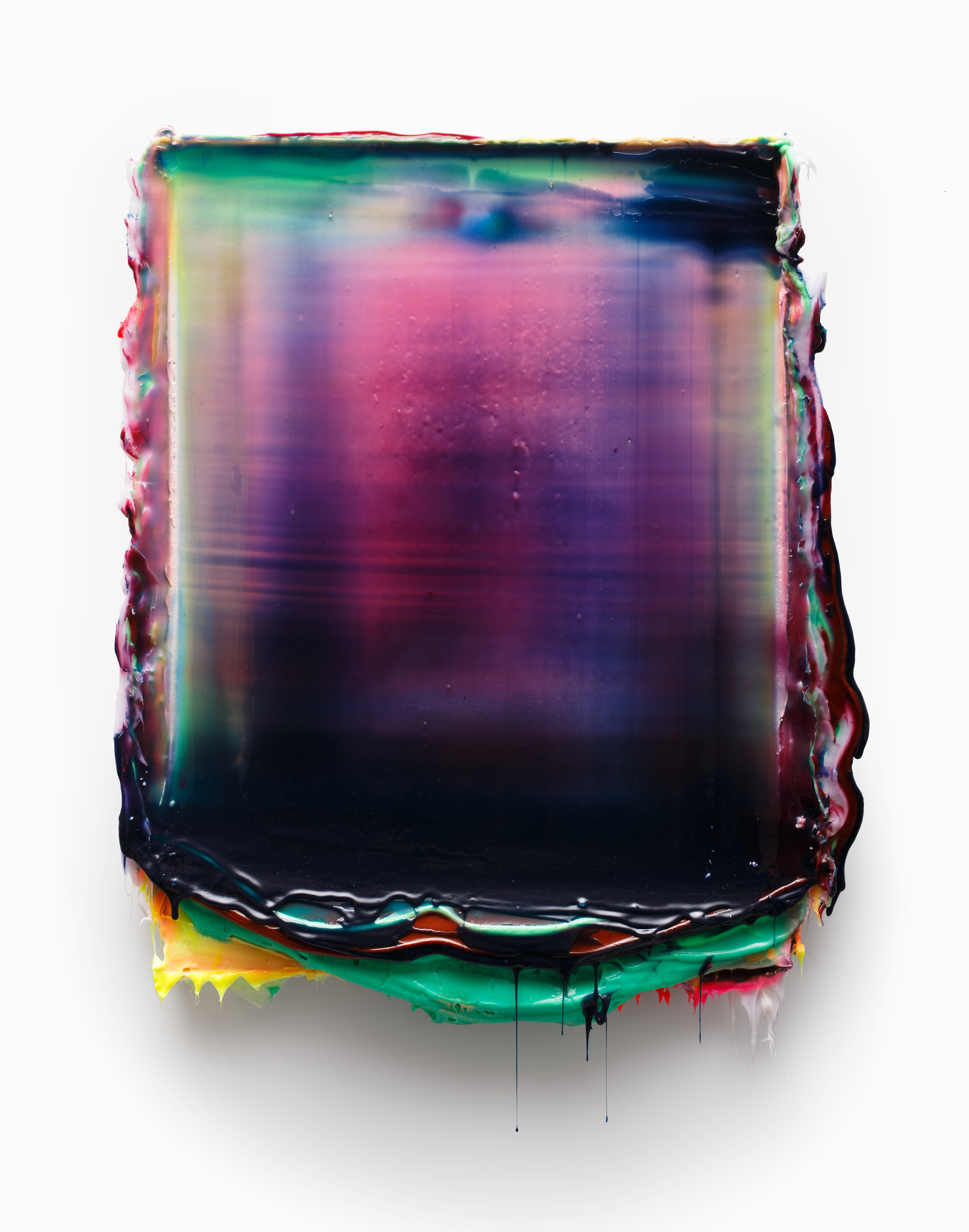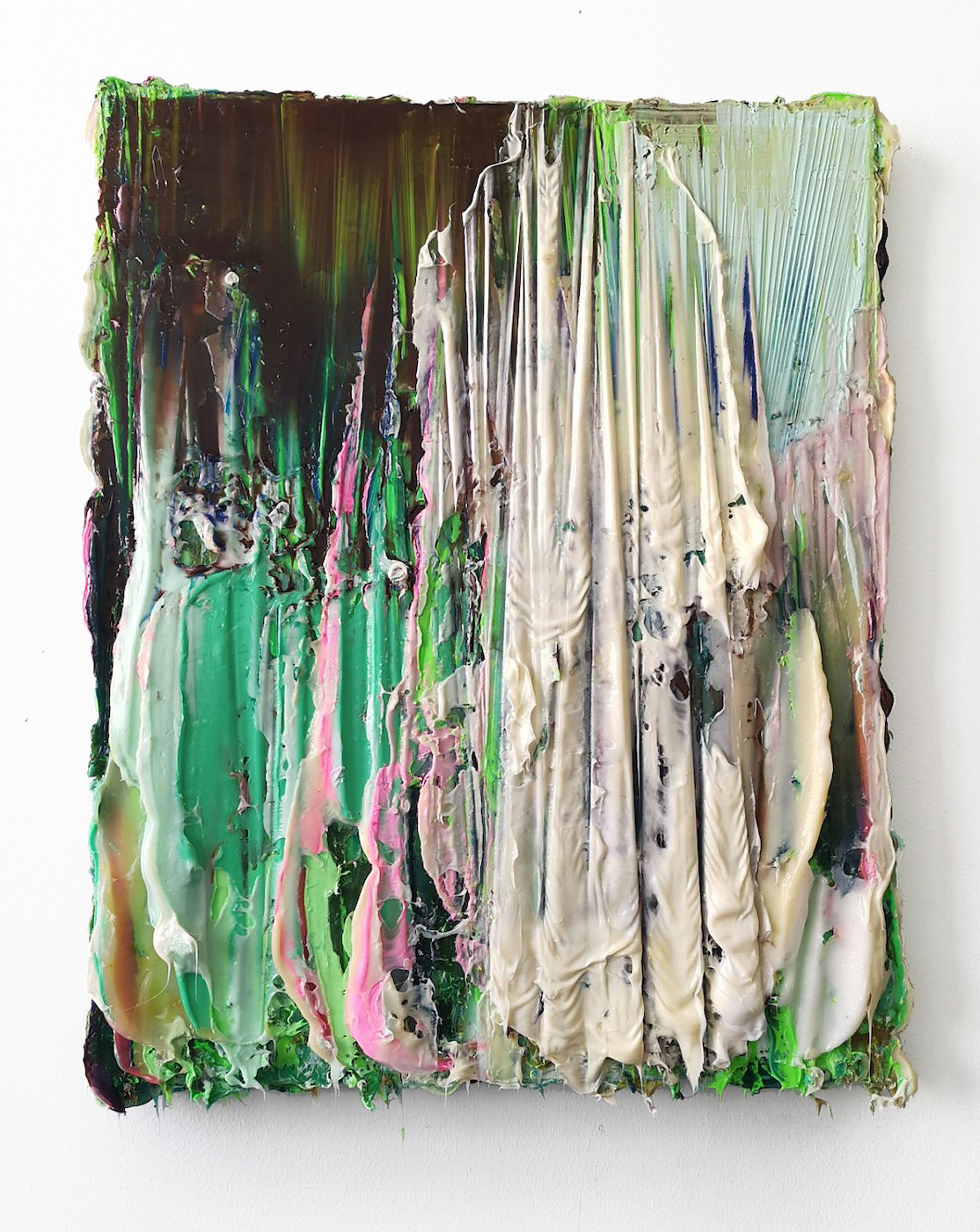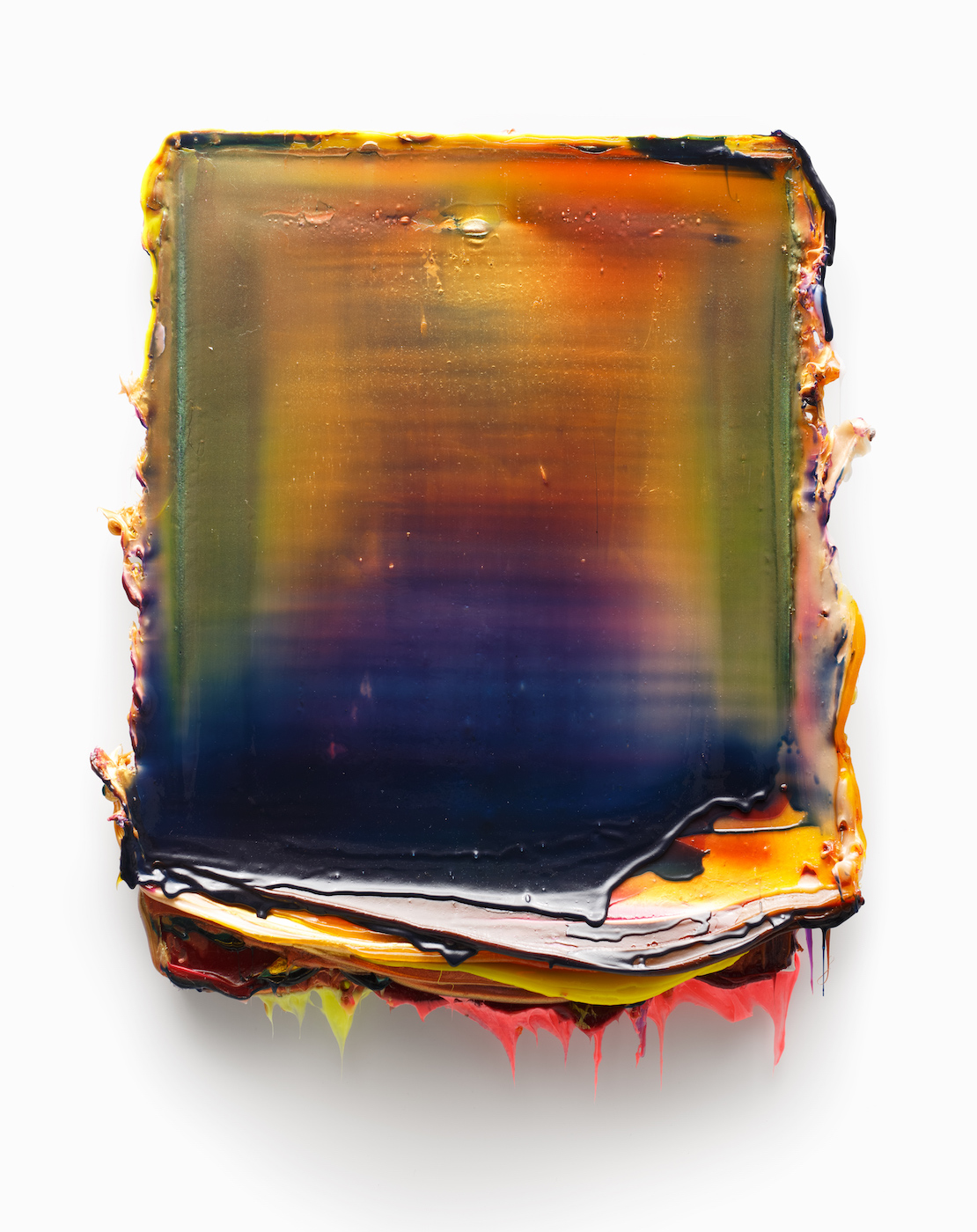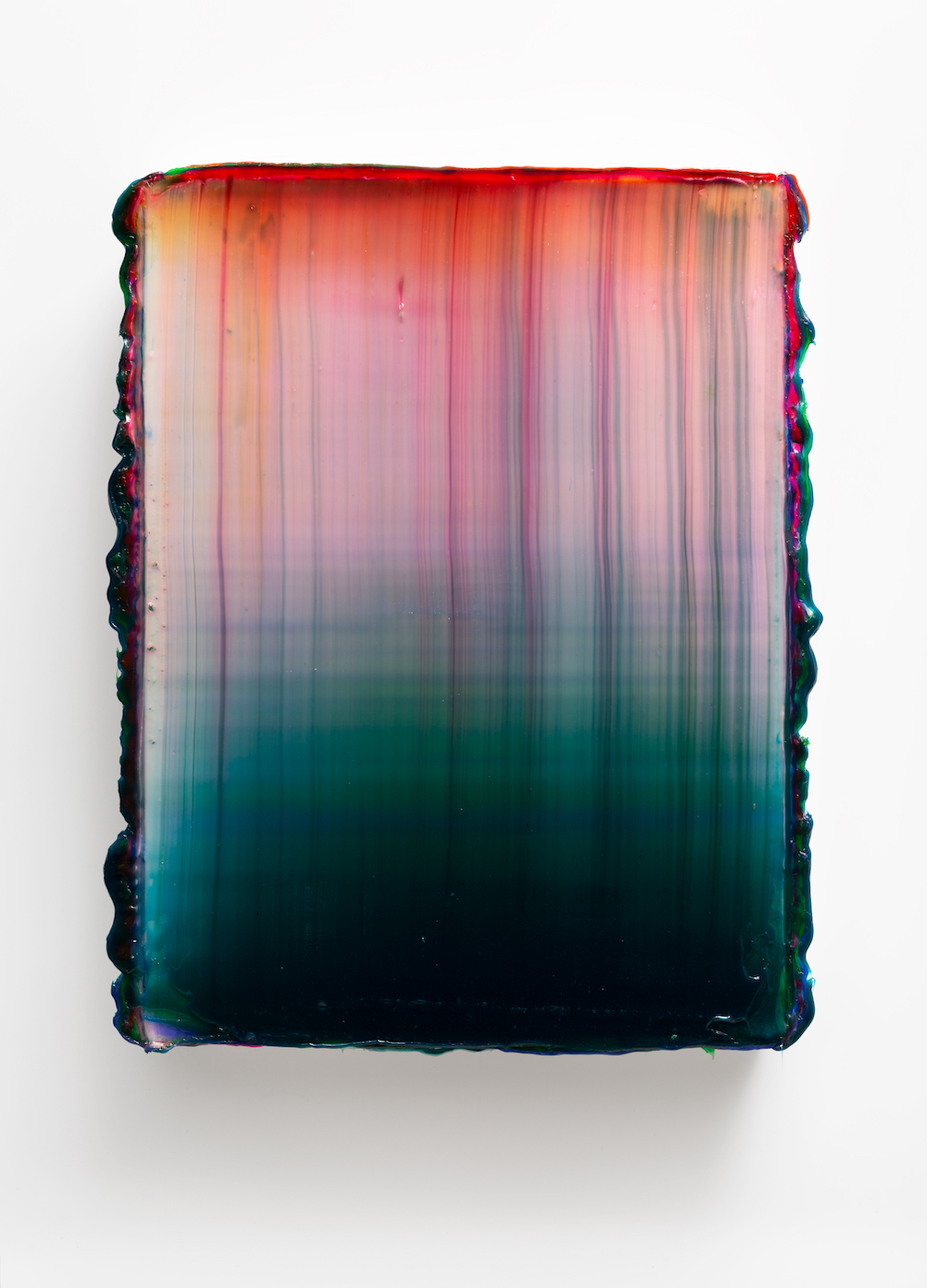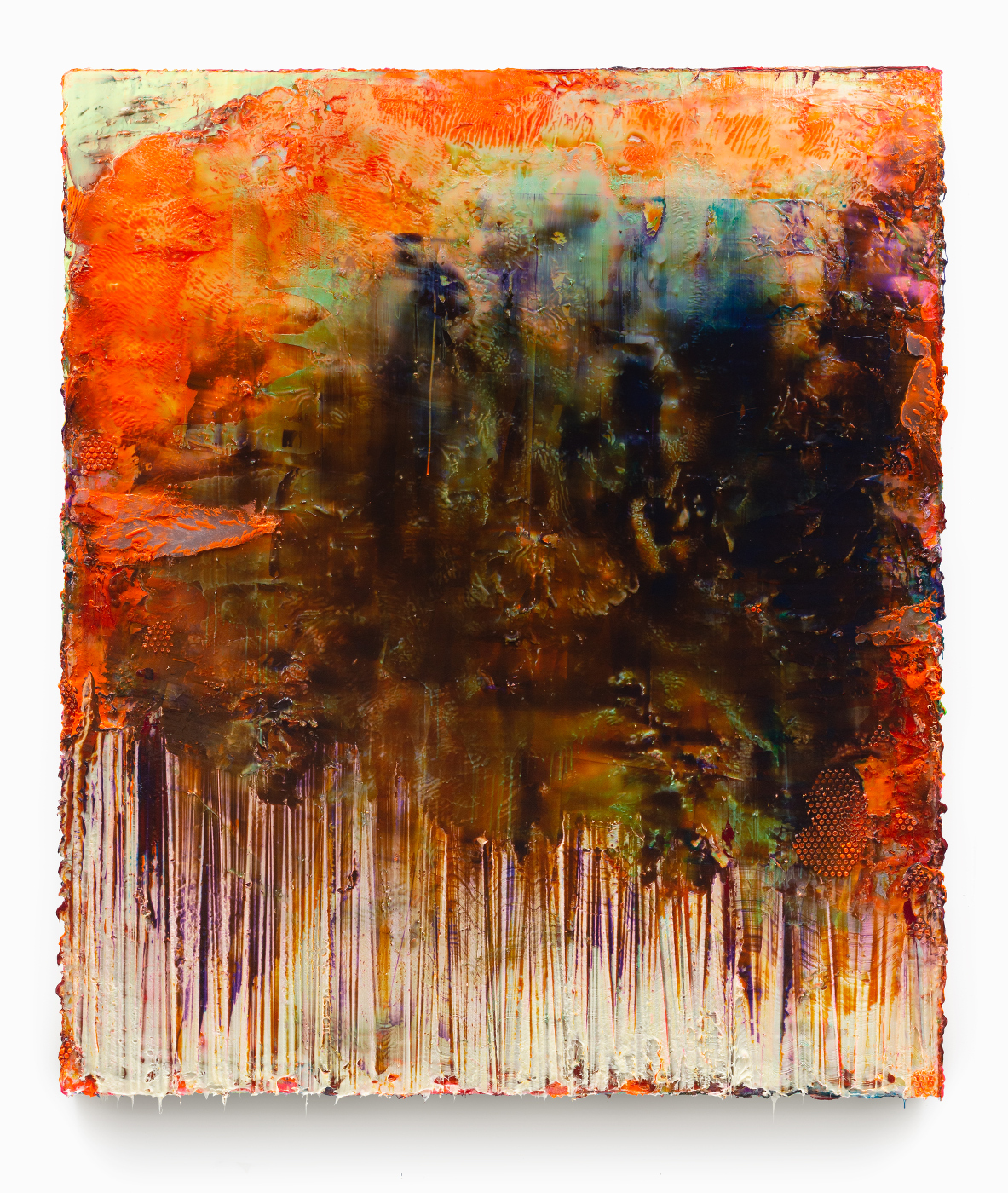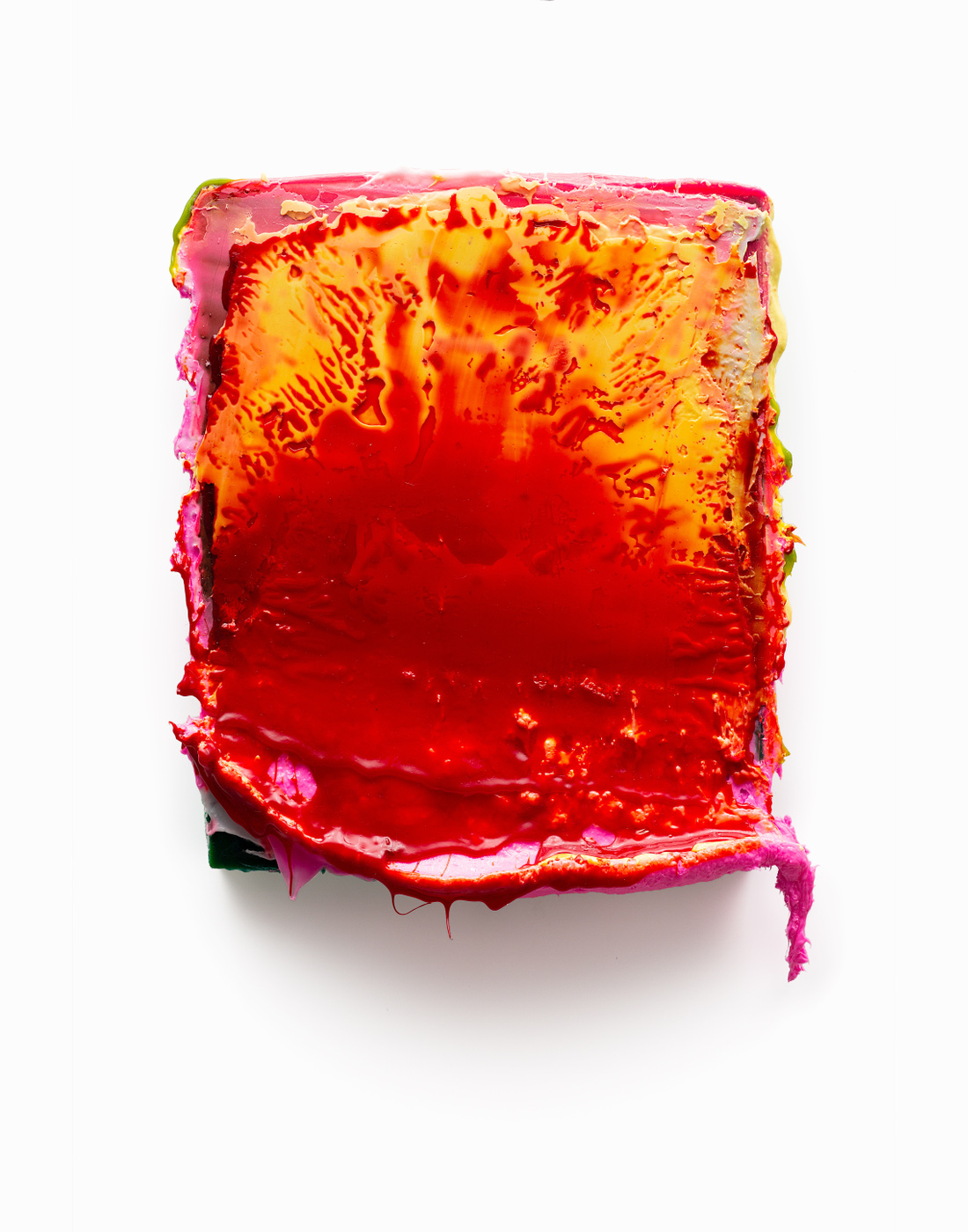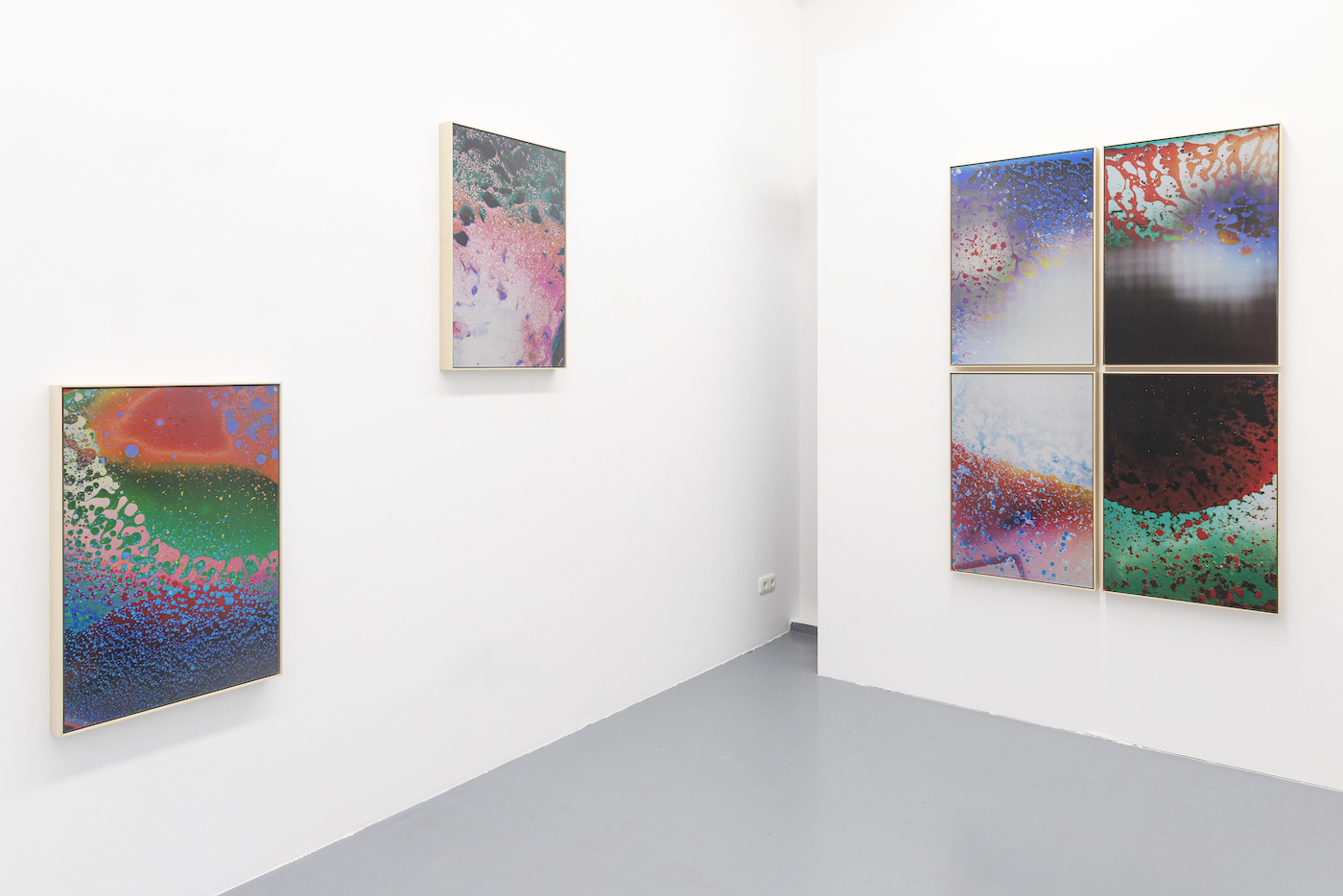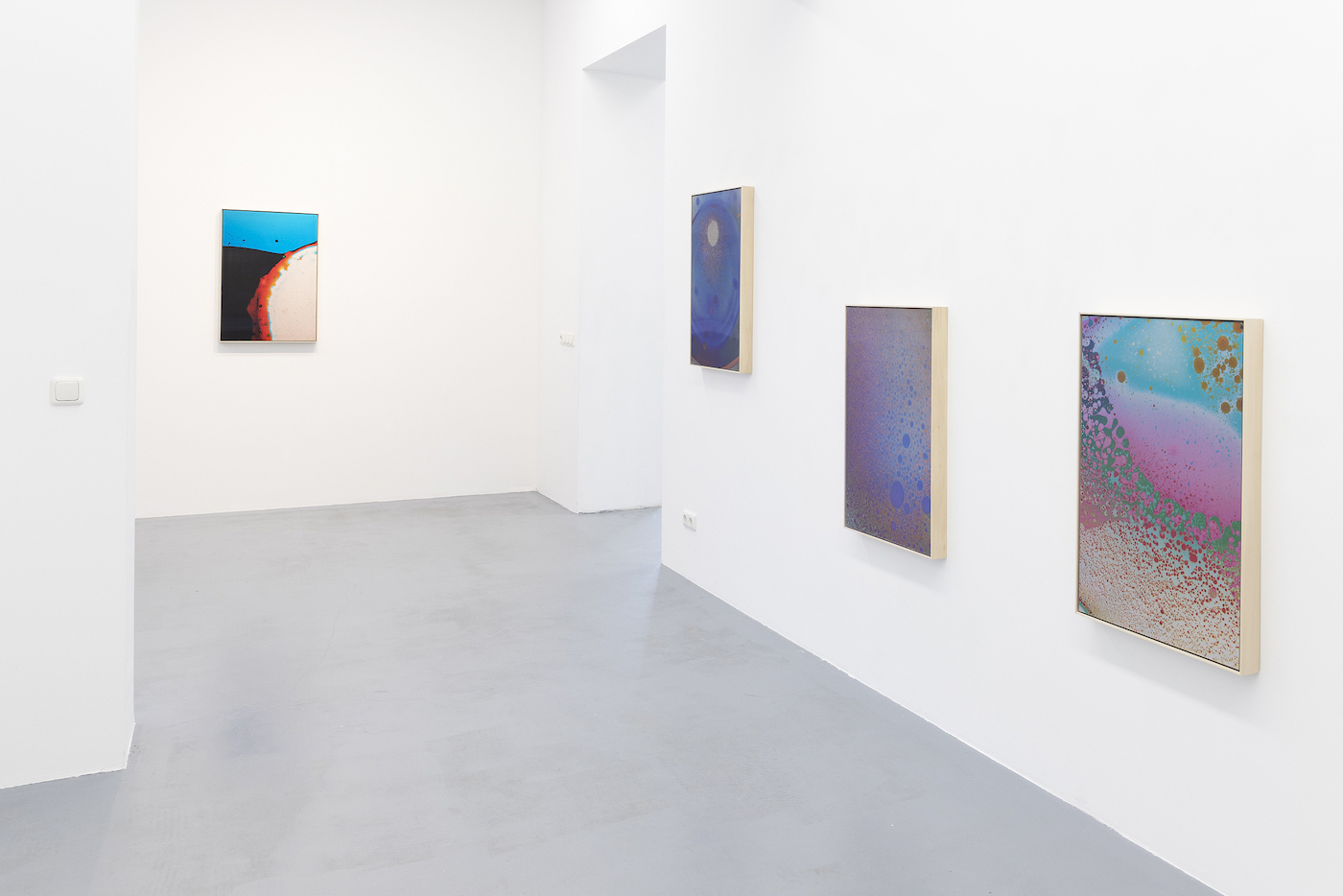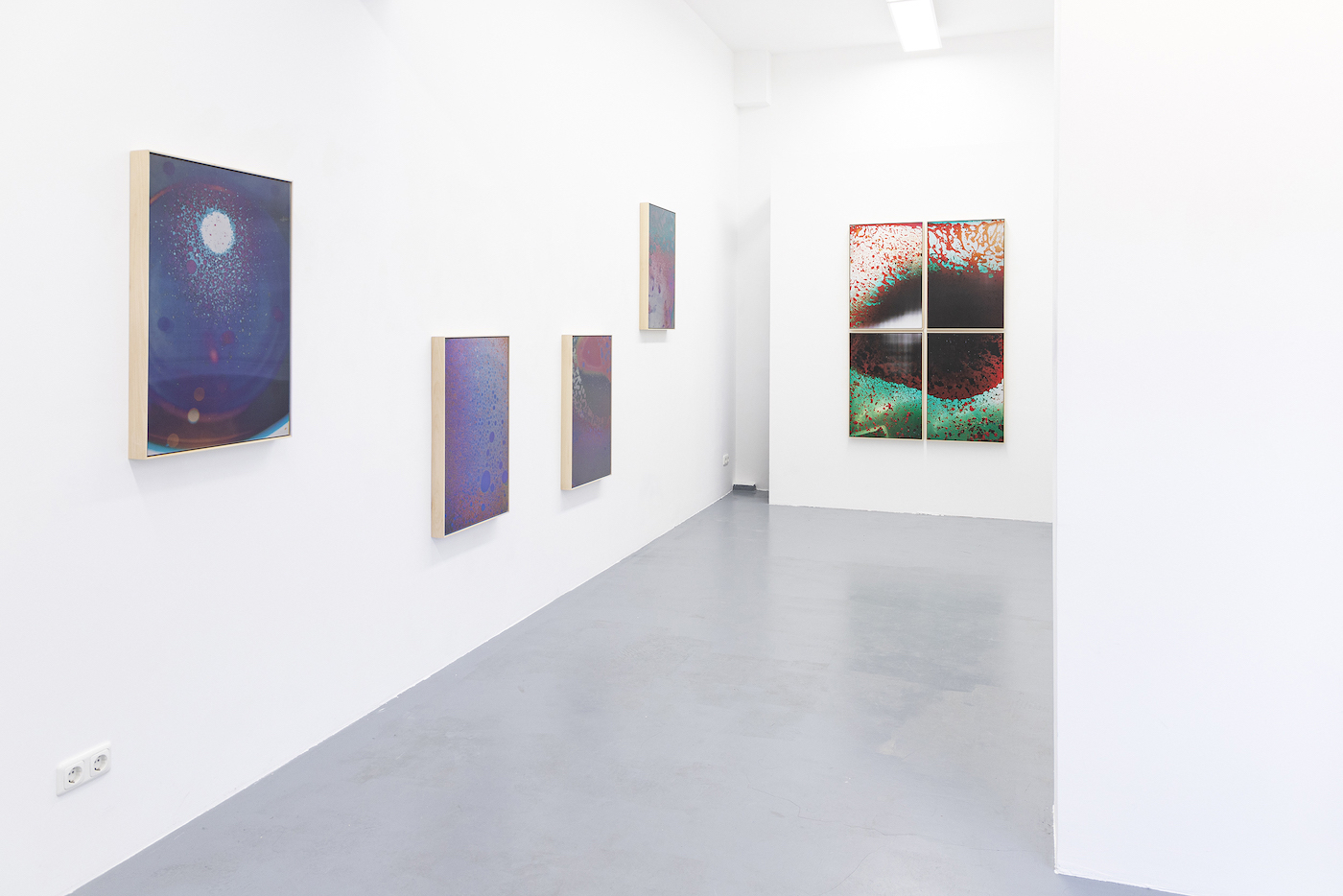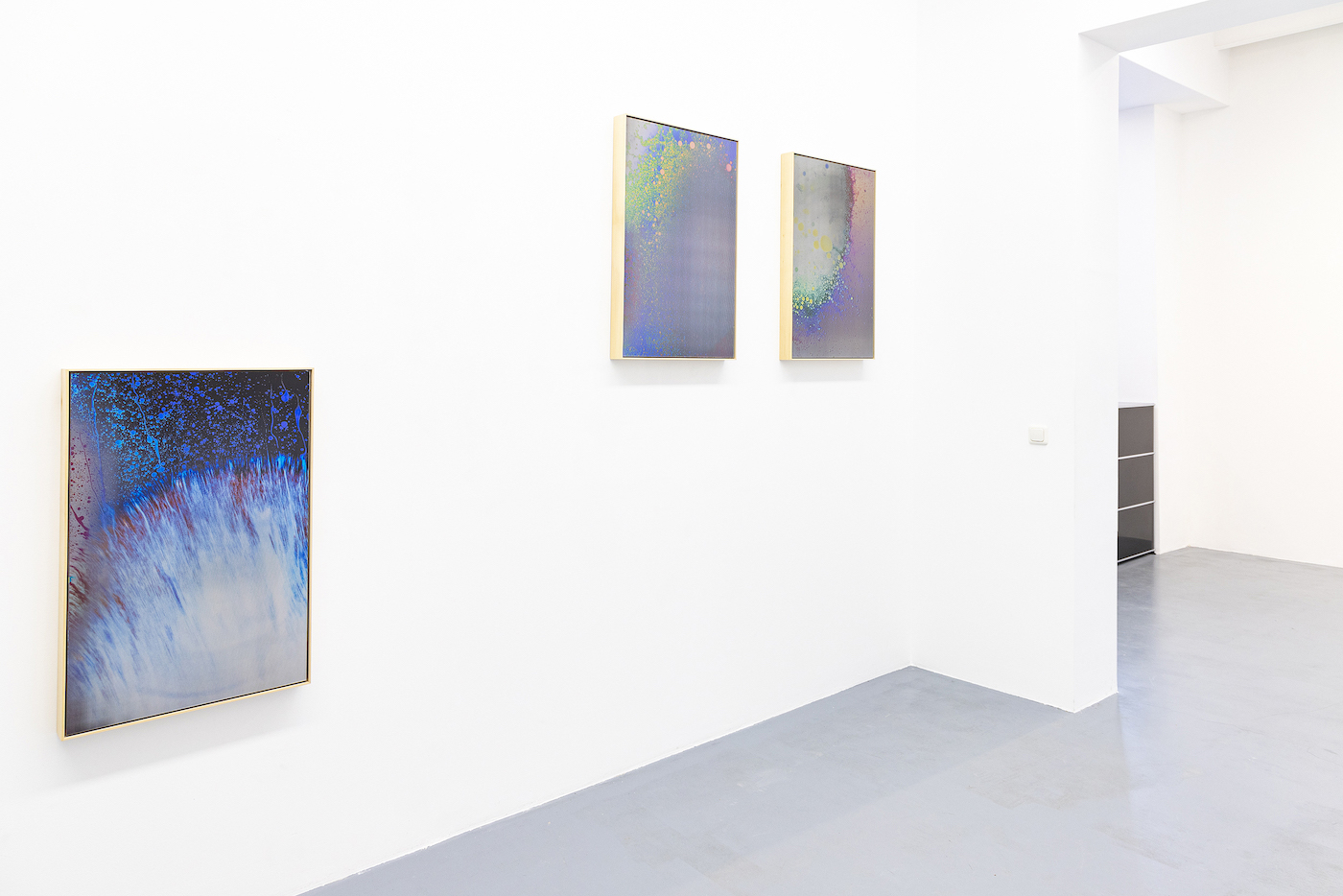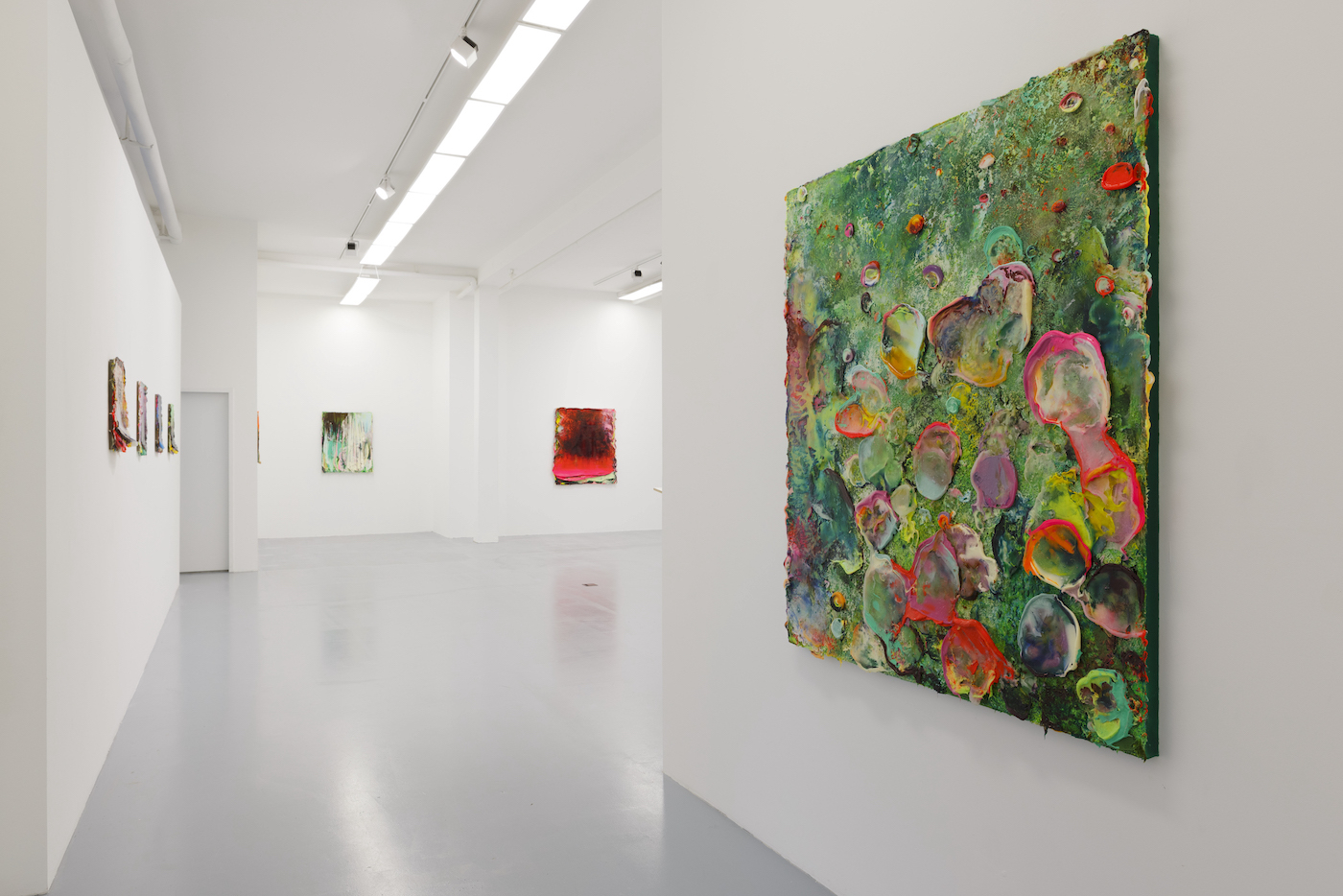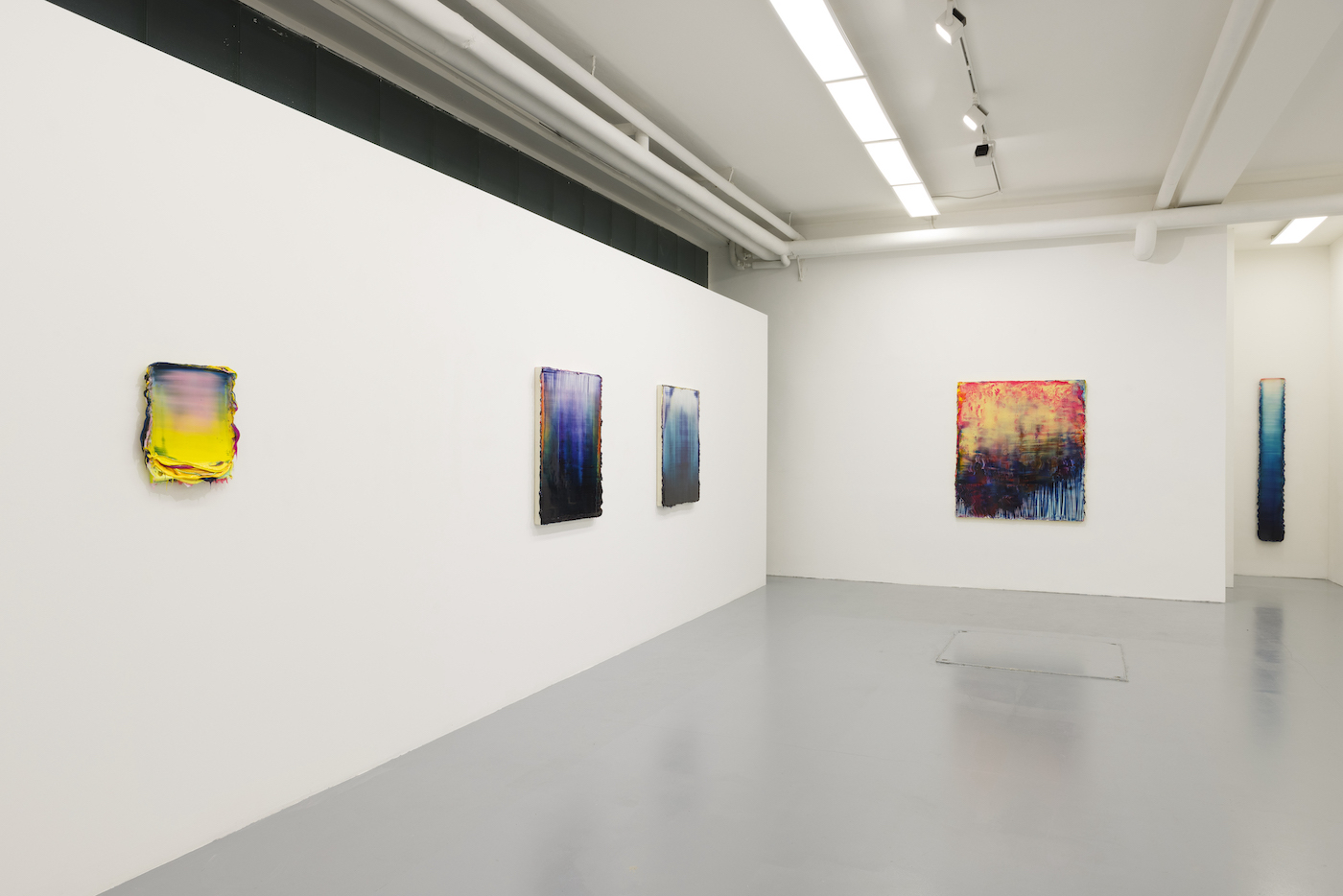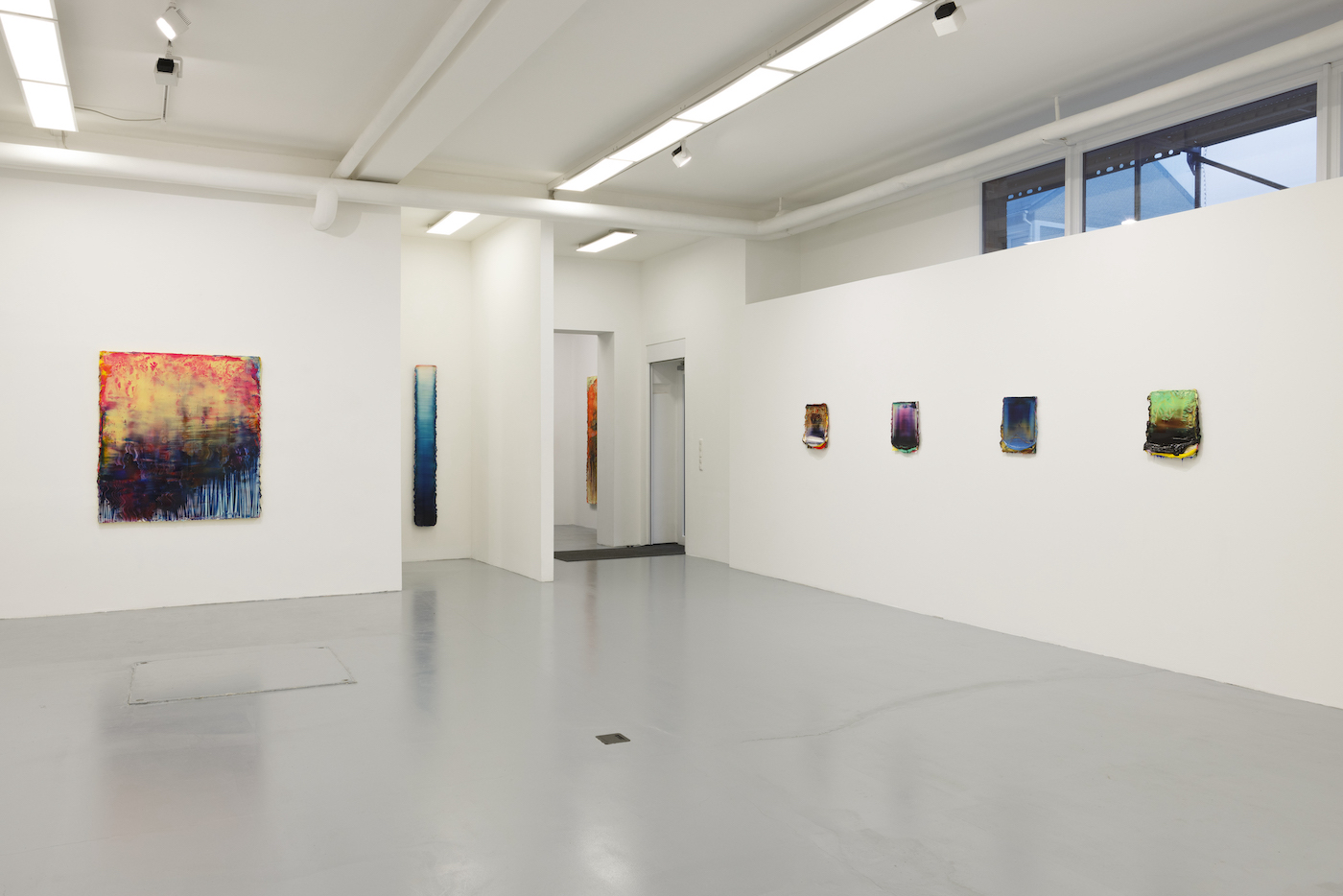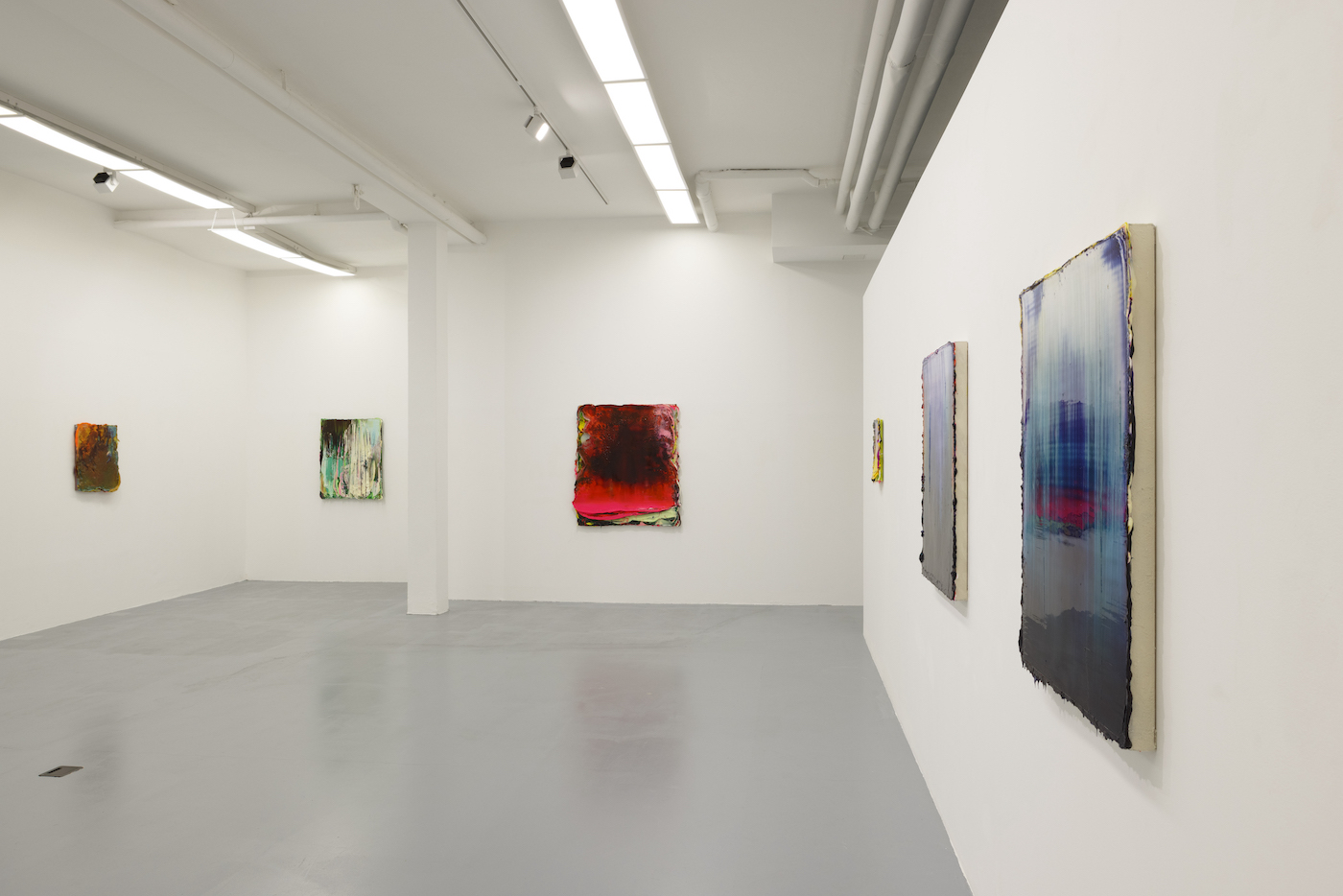Lev Khesin
CV
| *1981 | Pensa, Russland |
| 1996–1999 | College of Art Education Savitski Pensa |
| 2002–2008 | Universität der Künste Berlin, masterclass Prof. Frank Badur |
| 2005 | Carnegie Mellon University Pittsburgh, PA, USA |
| 2009 | Work stay in studio Kura, Fukuoka, Japan |
| Lives and works in Berlin |
Grants / Scholarships
| 2005 | NICA Scholarship at the Carnegie Mellon University, Pittsburgh, PA, USA |
| 2008 | Project funding by Stella Art Fundation, Moskau |
| 2009 | Artist in Residence in Studio Kura, Fukuoka, Japan |
| 2010 | Tempelhof-Schöneberger art prize 2010 |
| 2017 | Artist in Residence in Tulum, Mexiko |
| 2022 | Artist-in-Residence Mark Rothko Art Centre, Daugavpils, Latvia |
Solo exhibitions
| 2023 | Jazz, ArteA Gallery, Milan, Italy | |
| Lab/Redundancy, Evelyn Drewes | Galerie, Hamburg | ||
| 2022 | Le Voyage dans la Lune (Duo), Galerie Smudajescheck, Munich | |
| No Statement Required (Duo), Till Richter Museum, Buggenhagen | ||
| 2021 | Genesis, Evelyn Drewes | Galerie, Hamburg | |
| Lichter (Duo), Villa Heike, Berlin | ||
| 2020 | Die Welt Als Hologram, Galerie Smudajescheck, Munich | |
| 2019 | Luce E Materia, Galerie Artea, Milan, Italy | |
| Inner Forest, Westend Artspace, Melbourne | ||
| 2018 | In Focus // Out Of Focus, Galerie Smudajescheck, Munich | |
| Morphologie, Evelyn Drewes | Galerie, Hamburg | ||
| 2017 | Apeiron, Smudajescheck Galerie, Munich | |
| 2016 | Neon Black, Evelyn Drewes | Galerie, Hamburg | |
| 2014 | Dark Matter, Galerie Läkemäker, Berlin | |
| Permutation, Galerie Smudajescheck, Ulm | ||
| Aquacone - Liquid Boundaries, Till Richter Museum, Buggenhagen | ||
| 2013 | Klärt Sich Das Wasser, Werden Fische Sichtbar, Evelyn Drewes | Galerie, Hamburg | |
| Klärt Sich Das Wasser, Werden Fische Sichtbar, Kunstverein Bamberg, Bamberg | ||
| Aquacone / Liquid Boundaries, Till Richter Museum, Schloss Buggenhagen | ||
| Stoffwechsel, Galerie Im Rathaus Tempelhof, Berlin | ||
| 2012 | Holy Hologram, Läkemäker Johannes Zielke, Berlin | |
| Oxymora, Galerie Smudajescheck, Ulm | ||
| Elastic Pinioning, Java Haus, Hamburg | ||
| 2011 | Chromophobia, Galerie Smudajescheck, Ulm | |
| 2010 | Onomatopoeia, Läkemäker Johannes Zielke, Berlin |
Group exhibitions
| 2023 | RIPENSARE LO SPAZIO E IL TEMPO, Palazzo dei Principi, Bozzolo |
| From Berlin to Seoul: Crossing Horizons, CHOI&CHOI Gallery, Hori Artspace, Seoul, South korea | |
| Palais Oppenheim, Sotheby's Auction, Cologne | |
| ON AIR, Schloss Düneck, Moorrege | |
| Mixed Media #2, Projektraum studio., Hamburg | |
| Nature, Sebastian Fath Contemporary, Mannheim | |
| Expoarte Montichiari, ArteA Gallery, Milan, Italy | |
| 2022 | Five, Westend Art Space, Melbourne, Australia |
| Super*, Bermel von Luxburg Gallery, Berlin | |
| Accrochage, Sebastian Fath Contemporary, Mannheim | |
| Biennale d'arte di Alessandria Palazzo del Monferrato, Alessandria, Italy | |
| Elb/Hängung #1, Villa am Elbhang, Hamburg | |
| Micrologies, Irenic Projects, Los Angeles, USA | |
| Going For Baroque, LAProject, Landshut | |
| LICHT, Sebastian Fath Contemporary, Mannheim | |
| OOO [Out of Office], Berlin | |
| The Abstract View, Museum Modern Art, Altes Gaswerk Hünfeld | |
| Coexistence, Atatürk Cultural Center, Istanbul, Turkey | |
| 2021 | Das schönste Bild bei mir zuhause, Museum Ulm |
| Lichter, Torsten Ruehle und Lev Khesin, Villa Heike, Berlin | |
| Roter Kunstsalon, Museum Villa Rot, Galerie Smudajeschek | |
| Painting Now: Thai Mainhard & Lev Khesin, Sebastian Fath Contemporary, Mannheim | |
| Orbit, Poimena Art Gallery, Launceston, Tasmania | |
| 2020 | Nachts Allein Im Atelier #7, Evelyn Drewes | Galerie, Hamburg |
| Kunst-Stoff Plastik, Hans Erni Museum, Luzern, Swiss | |
| salondergegenwart, Hamburg | |
| If :: Then Chris Tille + Lev Khesin, Galerie Smudajescheck, Munich | |
| Grand Opening, Evelyn Drewes | Galerie, Hamburg | |
| Materia, Bermel Von Luxburg, Berlin | |
| Mona Foma, Museum Of Old And New Art, Berriedale, Tasmania | |
| Arthouse, Tulum, Mexico | |
| Image_Object (The Visual And The Physical), Poimena Gallery, Launceston, Tasmania | |
| Par Surprise, Galerie Corona Unger, Bremen | |
| 2019 | Roter Kunstsalon, Museum Villa Rot, Burgrieden |
| Nachts Allein Im Atelier #6, Evelyn Drewes | Galerie, Hamburg | |
| Sam Griforian, Helmut Zielke, Lev Khesin, Galerie Läkemäker | |
| 2018 | Vis à Vis, Barlach Halle K, Mit Evelyn Drewes | Galerie, Hamburg |
| Roter Kunstsalon / Museum Villa Rot, Galerie Smudajescheck, Burgrieden | |
| Künstler Der Galerie, Kunstraum Darß, Born am Darß | |
| 2017 | Nacht Allein Im Atelier Iv, Evelyn Drewes | Galerie, Hamburg |
| Berlin-Based, Till Richter Museum, Schloss Buggenhagen | |
| 2016 | Nachts Allein Im Atelier Iii, Evelyn Drewes | Galerie, Hamburg |
| Abstract Worlds - 21St Century International Abstract Art From The Museum Collection, Till Richter Museum, Buggenhagen | |
| 2015 | Nachts Allein Im Atelier, Evelyn Drewes | Galerie, Hamburg |
| 2014 | Seen Unseen, Bycr Gallery, Milan, Italy |
| Art From Germany: Between Man And Nature, Till Richter Museum, Schloss Buggenhagen | |
| 2013 | Junge Kunst, Sparkasse Karlsruhe Ettlingen, Karlsruhe |
| Junge Positionen, Mit Evelyn Drewes | Galerie, Offenbach | |
| Duett, Galerie Läkemäker, Berlin | |
| 2012 | Layers - Gabriele Evertz, Lev Khesin And Julia Steiner, Sonja Roesch, Houston, USA |
| Match / Piet Tyutel, Lev Khesin, Nouvelles Images, Den Haag, Denmark | |
| Retraho, Betahaus, Berlin | |
| Dripping Color Amazement, Oqbo, Berlin | |
| 2011 | Deux Générations, Deux Visions, Château De Saint-Auvent, France |
| Chromofobia, Galerie Smudajescheck, Ulm | |
| Winterausstellung, Galerie Irrgang, Leipzig | |
| 2010 | Friede Freude Eierkuchen?, Galerie Hans Tepe, Damme |
| Läkemäker / Johannes Zielke, Berlin |
The path to substance
The transition from one period of an artist's life to another, whilst never plain sailing is nevertheless as subtle as those age lines that have gradually appeared on an old friend's face. One senses a difference and indeed, each new creation seems to confirm that a departure from one era has taken place even if the destination to another has yet to be announced. In truth, no announcement needs to be made. No good can come from disturbing this transition. Instead, one waits cautiously, letting the way forward strengthen with resolve. Art Theorists should refrain from analysing during this transition and with a simple, benign observance will discover the changes in Lev Khesin's work over the past seven years. This is a relatively short time span. Therefore the earlier works, not yet old, continue a significant existence together with his recent output. But as one looks at these works side by side, the difference between old and new becomes clear to the keen eye of an imaginative viewer.
Khesin's technique remains the same: a drawn out process where a multitude of colours are applied in layers of silicone. A viscous mass bends to the artist's will before rebelling and singing to its own tune. The artist humbly accepts this natural process that thwarts his power.
With good reason Lev Khesin compares painting with the art of archery or other Zen rituals. As a layer of silicone is applied Khesin focuses solely on this one action. It is a controlled exercise of mental presence and the resulting image is lasting evidence of an accomplished yet long gone meditation.
And has the process brought enlightenment? If one is to explore the term quite literally within Khesin's work, then yes, the light penetrates through the transparent material and coloured layers shine out. They merge and oscillate. A multitude of shades depend on where the viewer is standing or on the time of day. A single ray of light on the painting can cause a deeper colour to glow from within it. That or any other colour may find itself shimmering, diffusing or mysteriously dispersing. Boundaries or rules between the colour fields are never clear for they originate not from space but from depth.
Only on the frayed edges of the canvas can one see evidence of the whole multi layered colour scheme. Only here can one understand the artist's toil and how he envisaged his materials into a form whilst simultaneously permitting his wards to exist within their natural energy of resistance.
It's not the art of performance but rather a deeper knowledge of what is being expressed that confirms an image as art. This knowledge breathes life into the artist's technique and as with anything that lives, change occurs. The paintings pass through stages: they leave something behind yet become something new. Artistic development can be calculated from these sequences of change. One sees that something new is developing in Khesin's work but on top of this there is a sense that something more than technical skill is being revealed.
Those who know the earlier works of Lev Khesin will recall the moment of standing in front of these objects for the first time and experiencing a sense of wonder at how much can be seen in these works. A smooth, cool, even repellent surface emotionally confounds the artificial surface: it's as if a series of snap shots has caught this synthetic material’s eruptions. Simultaneously it enables the artist to work his technique into the creation in such a way that we firmly believe in the organic origins of his paintings. They live with him, oscillating within a tense field of repulsion and desire.
This paradoxical tension remains in Khesin's later output but now, in the wake of contemplation, it becomes inescapable. It moves through and past silicone surfaces and if only for a moment it floats into the territory of the sublime. Supported by ostensive dimensions, the paintings will the viewer to regard them spiritually: dark but never gloomy, shimmering like a golden vessel from an ancient liturgy they seem to cross any denominational divide with a destined and spiritual truth.
Lev Khesin weaves his own magic, bringing a new twist to the colours and materials of his choice, resulting in a series of new paintings where a vibrant character speaks out from the depths. Unlike the previous techno-organic pre-figurations and unlike the later contemplative Icons, recent works now exude the rusty heat of earth, clay and silt. These substances aren’t apparent in their original form but they have left a trail of the presence. Now more than ever, a painting by Lev Khesin is a landscape that can also lend itself to the environs of the portrait or the holy.
The eyes and hands of the artist created these new illusions from silicone and colour but what happened in the process? Did he conquer his materials? Did he infuse them with life? Let's forget this word 'abstract'. Taking something definite, a water lily for example, it is genuinely surprising, when one really looks, at how abstract it is.
Irena Akopjan
The perception of Space in Front of the Picture as Perception of Space in the Picture
An eternal gaze
to the drifting sight
embraces the amber
the painting vision
Impassive
streams to edges
the pressed depth
A variegated glow
Among the works at the National Gallery in Berlin is a painting by Barnett Newman entitled “Who’s Afraid of Red, Yellow, and Blue, IV”. This painting, which deals with the presence of both the spectator and colour, offers an interesting comparison to recent works by Lev Khesin. Newman’s painting demands that we find a place or, more precisely, a position from which we can perceive the painting in its comprehensive effect. While looking at the painting, the spectator soon positions himself in the middle vis-à-vis the blue surface, which for good reason has human dimensions, and here he is immediately surrounded by the red and yellow colours. This effect is enhanced by the fact that the eye never stands still; otherwise the receptors would lose their colour-perception. The eye wanders hither and thither, experiencing strong stimuli on the edges of the blue middle field. Such continuously reactivated stimuli create afterimages that shift subtly, and thus, by means of the three dominants, generate still other values of varying intensity.
Despite the fact that the spectator takes a position in front of the painting, it is the movement of his eyes that allows him to consciously note the colour and the space, and thus the content of the image. Through this consciousness—through the continuous stimulation of the receptors—the spectator ultimately grows aware of himself.
Surrounded by Colour
Lev Khesin’s works seem to run contrary to Newman’s painting. Whereas Newman uses acryl in his work, which he has applied with a paint roller in several stages, Lev Khesin mixes silicone with pigments that he applies, expressively or contemplatively, with a squeegee onto the substrate. The paint produces various reactions. In some of the works it appears increasingly object-like, almost sculptural; in others, thanks to the way it appears, the paint counteracts its own corporeal presence. In those works where Khesin achieves an almost homogeneous application of paint through countless layers of glaze, a similarity with Newman is nevertheless apparent. The spectator is actively called upon to move in space, thus activating the space itself. The continuous repositioning of one’s body in space, and the simultaneous loss of a fixed position therein, results in the fact that the various colour layers and the various colour spaces can be perceived as such in the first place. The lower levels interchange with the layers higher up. The light penetrates this body of colours in various ways.
Thus there are areas where the surface almost appears opaque, although in other places it seems to dissolve in the changing rays of light as it emits colours. A stable pictorial status is never attained. It never results in a solid unchanging picture. Just a slight tilt of the head is enough to obtain a new impression. To turn things around. This activation of colour by seeing it in space increases the impression of disembodied colour that at times seems to stand in complete contradiction to itself as a material.
There’s nothing rushed or hasty about this continual search for a position, which never leads to a conclusive place. Rather, it is a movement in which the peacefulness of seeing becomes possible.
The colour-space is triggered by ambulation.
Dennis Meier
Interview Aesthetic Magazine
How and when did you find the inspiration to be an artist?
I grew up in an artistic family: both of my parents are icon painters and my sister is an illustrator. My father's mother and my mothers's father were artists too. Most of my parents' friends are artists, and so on. There were tons of art books and magazines around the house. Last but not least, important was my other grandfather's influence, who was a main engineer of the diesel plant in Penza, my city of birth in Russia. I was more into reading about tech stuff rather than Art. As a teenager I dreamed of becoming an aircraft construction engineer. When I think about it now, I see why my current creative process is a mixture of painters traditional approach and engineers technical approach. I use a lot of materials and tools that are rather "industrial". I cannot even remember when the last time I bought something from an artist supply store for my work.
Did your style changed over the years?
I've began to develop the technique of painting with silicone years ago. I was intrigued and fascinated by the number of different approached and possibilities it offers. I continuously test new ideas, but from time to time I also pick up some technical or visual approaches from years ago because I think it's something worth to be developed further. In most cases, it takes me several months or even years to complete one painting (for instance, I just finished a painting started in 2006!), and so I work on several pieces simultaneously. Therefore, it's hard to talk about one particular strait vector along which my work is heading. It's more kind of a spiral rather than a line. Then there are my other projects - a series of drawings from 2006 - 2012 made by an electric drawing machine I constructed from toys and a continuing series of photographs that deals with light refraction and reflection in water. Currently, I'm developing a video installation for technically manipulated LCD screens that deals with the light and its interaction with the solid, mundane matter, much like the photo series and, of course, my transparent silicone paintings.
What is your creative process like?
The investigative trial-and-error process is also important, mixing all possible materials, pigments, tools, and surfaces without knowing in advance what the final result will look like.
Which are the artists that inspired you most?
There are many artists whose work I highly appreciate, like Turner, Klein, Fischli & Weiss to name a few. Yet my inspiration doesn't mainly come frome visual artists, but rather from nature, industry and also music. Right now I'm very much into Miles Davis and his "Bitches Brew" album. Davis once described the recording process: "What we did on Bitches Brew you couldn't ever write down for an orchestra to play. That's why I didn't write it all out, not because I didn't know what I wanted; I knew that what I wanted would come out of a process and not some prerranged shit."
This could be a short description of my attitude, too.
What are you trying to communicate through your art? Is there a special meaning?
I've already mentioned my technique that includes silicone paint and a number of different industrial or self-made tools in different variations. As for the color, for me it's a kind of an alternative language. More than that, it's an opposition to the language as a system of definitions. It's an opposition to the logical mind, which prefers line to color. My goal is to tell "stories" with colors, ligh, and shapes; something that can be read but cannot be verbalized.

